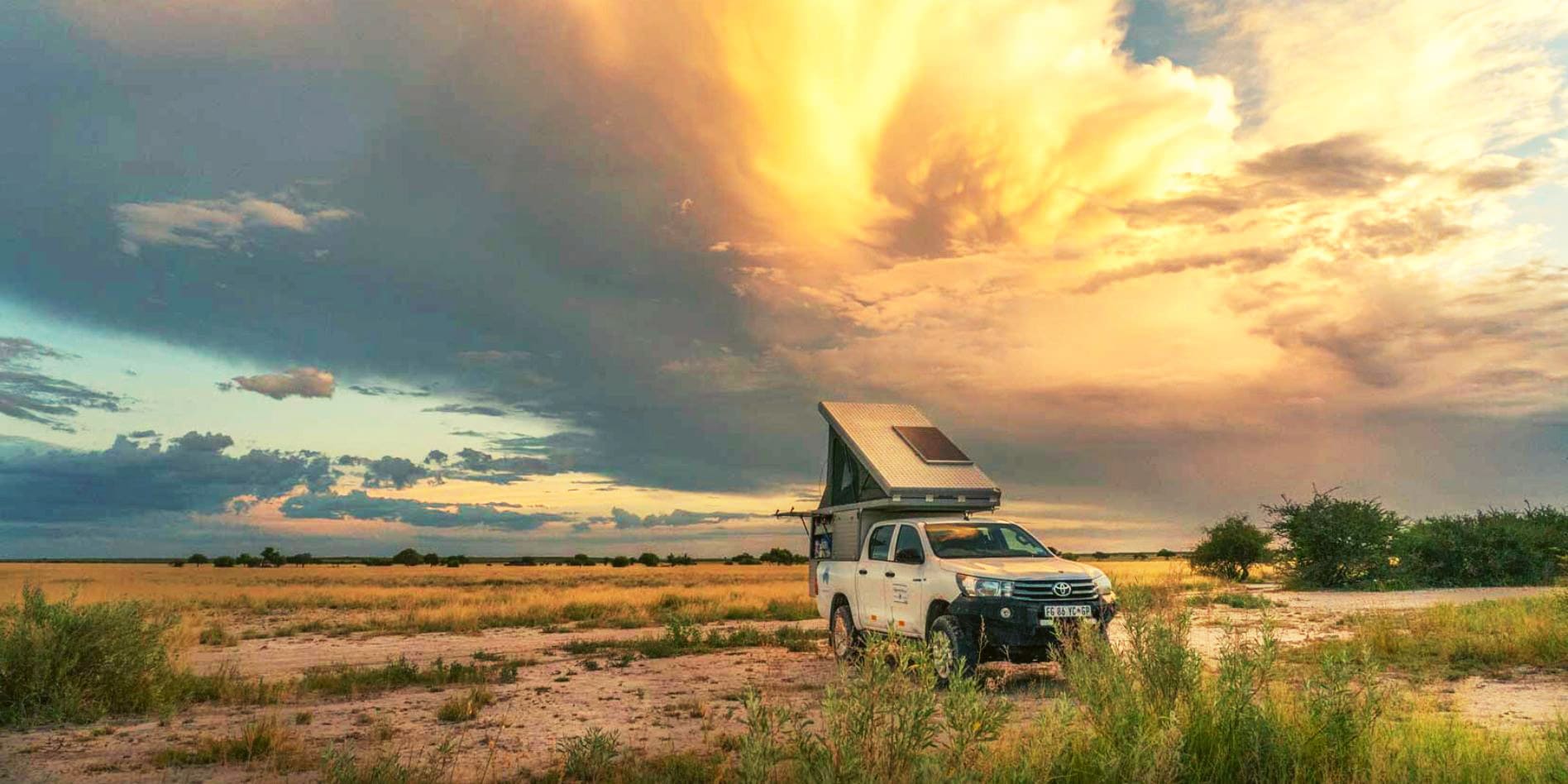In this article, you’ll find all you need to know about camping in the Central Kalahari Game Reserve, along with our own camping experience in this vast remoteness.
This camping trip was part of our larger Botswana camping safari and was an interesting introduction to the diverse landscape of Botswana.
🦁 What’s Included in this Central Kalahari Game Reserve Post?
- 🗺️ Interactive Map of CKGR (Central Kalahari Game Reserve)
- 🏕️ Camping Info: CKGR
- 🧾 CKGR Camping Fees
- ⛺️ CKGR Campsites
- 🦅 Wildlife You Could See
- 🚙 CKGR Driving Conditions
- 🛻 Hiring a 4×4
- 🌦️ Best Time To Visit Central Kalahari Game Reserve
- 🚐 CKGR Tours
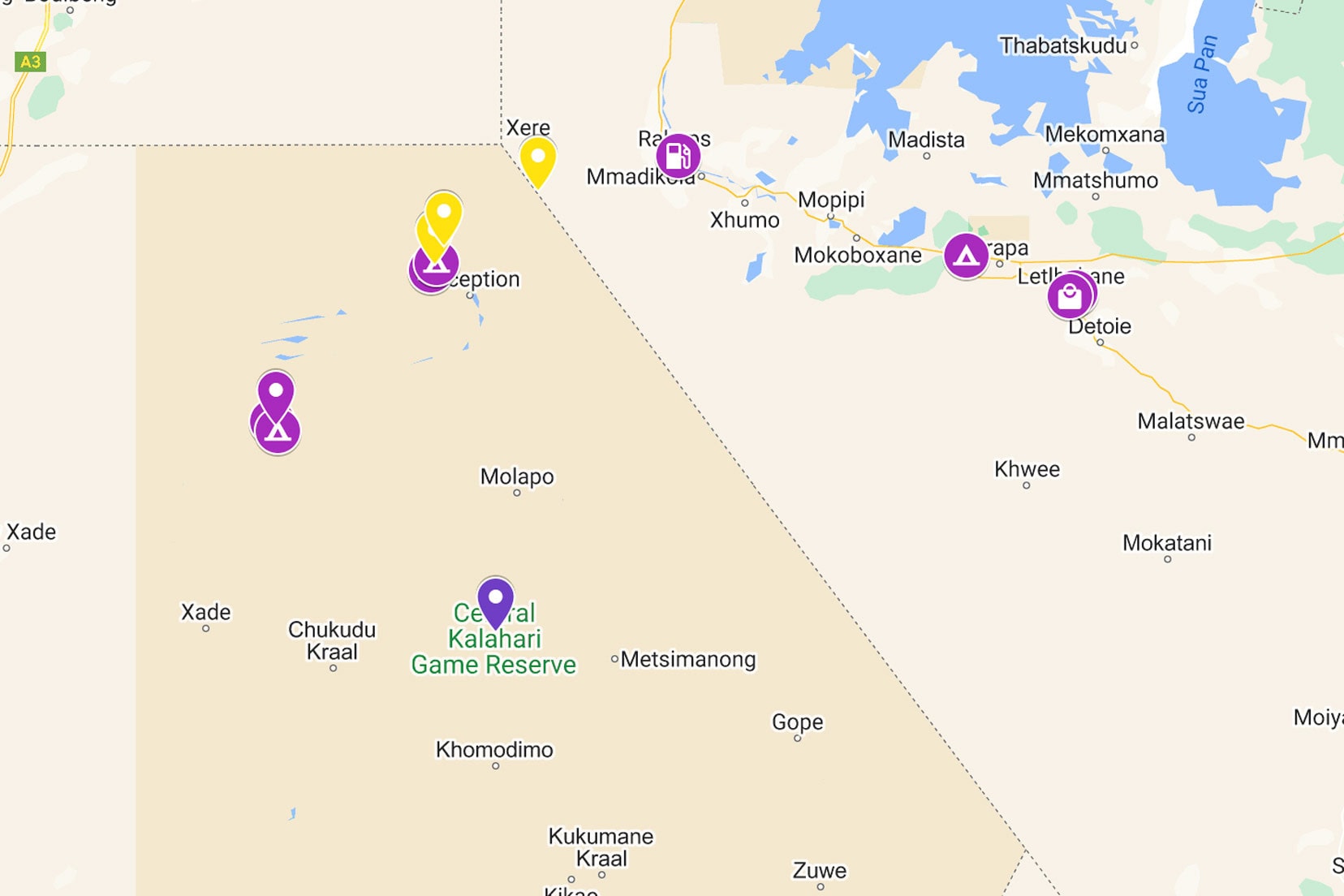
Camping in the Central Kalahari Game Reserve
I thought the Kalahari Desert was a remote land of sand, stretching for miles where the heat soared and nothing but the hardiest of animals and plants survived.
Turned out I was wrong.
The Central Kalahari Game Reserve is indeed remote, and to be fair there is plenty of sand. It’s hard not to notice it when you’ve roller coastered your way along more than 500 kilometres of the stuff.
Often deep, sometimes corrugated, and ever-present on the seemingly never-ending tracks.
But the landscape, in summer at least, is awash with scrub bushes, huge golden plains of grass, grey catophractes, Kalahari apple leaf bushes and thorny acacia trees.
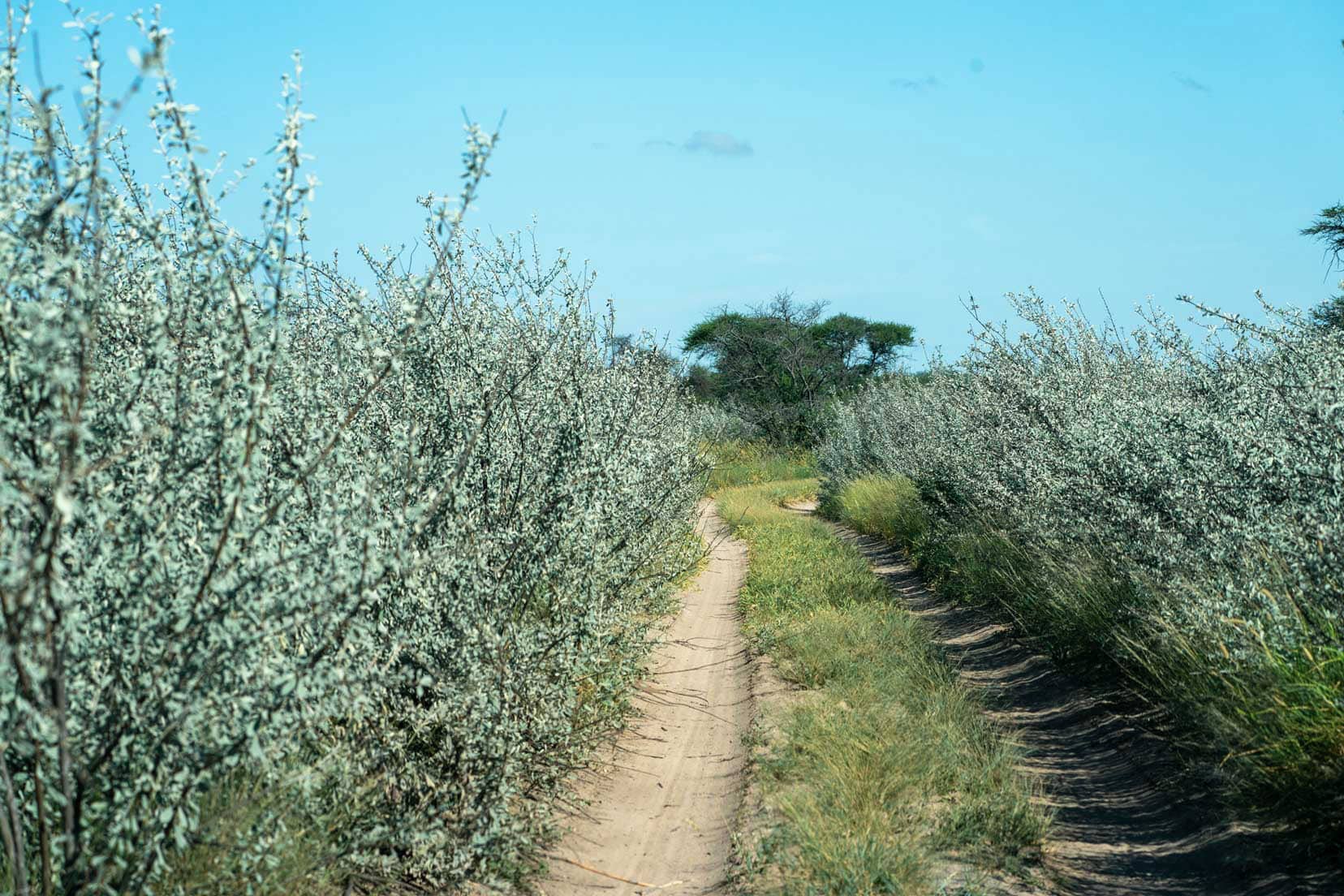
Various types of antelope roam the land that is freshly brought to life by the summer rains. And with them, come the predators, and a multitude of other animals that call the Central Kalahari home.
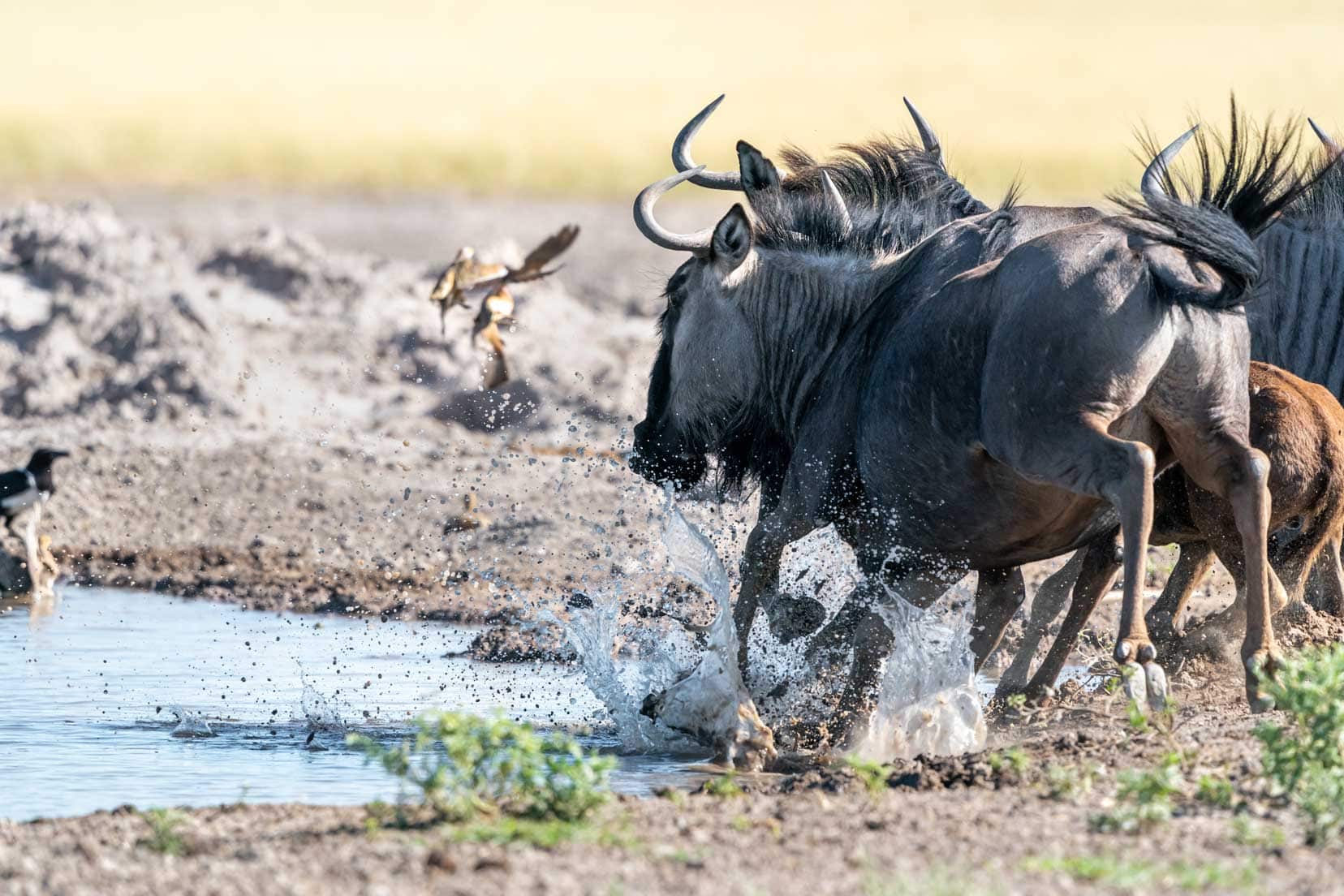
There is no internet.
No cell phone signal.
And no water.
What better place to embark on a camping trip?
Read on for all you need to know about camping in the Central Kalahari Game Reserve, with tips and stories from our own experience of our self-drive itinerary.
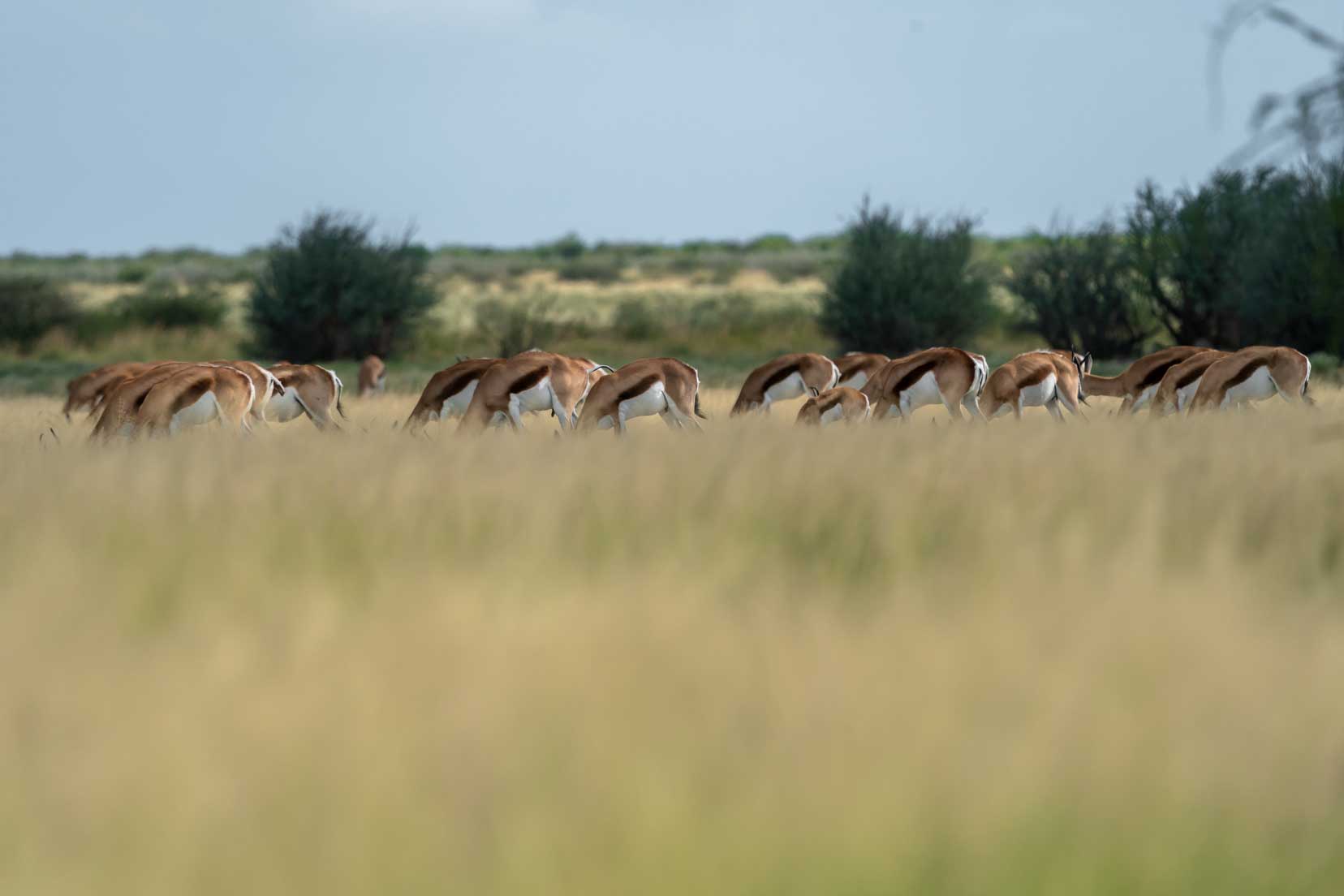
Map of Central Kalahari Game Reserve and Camping
👉 Are you Planning Your Botswana Trip?
- If you need to Hire a Camper or motorhome ▶︎ Get a Quote Today
- Hiring a car? 🚗 Find out how much it’ll cost at DiscoverCars here.
- Booking a flight? ✈️ Use Skyscanner to find a great deal
- Arrange Travel Insurance. 🏥 We recommend World Nomads or Safetywing
- Arrange your International Driver’s Licence here
- Arrange for someone to look after your pets: 🐾 We love TrustedHousesitters.
Planning on Overlanding and Planning Your Own Route?
⭐️ Download this FREE printable road trip planner to take the hassle out of planning and keeping useful info in one place.
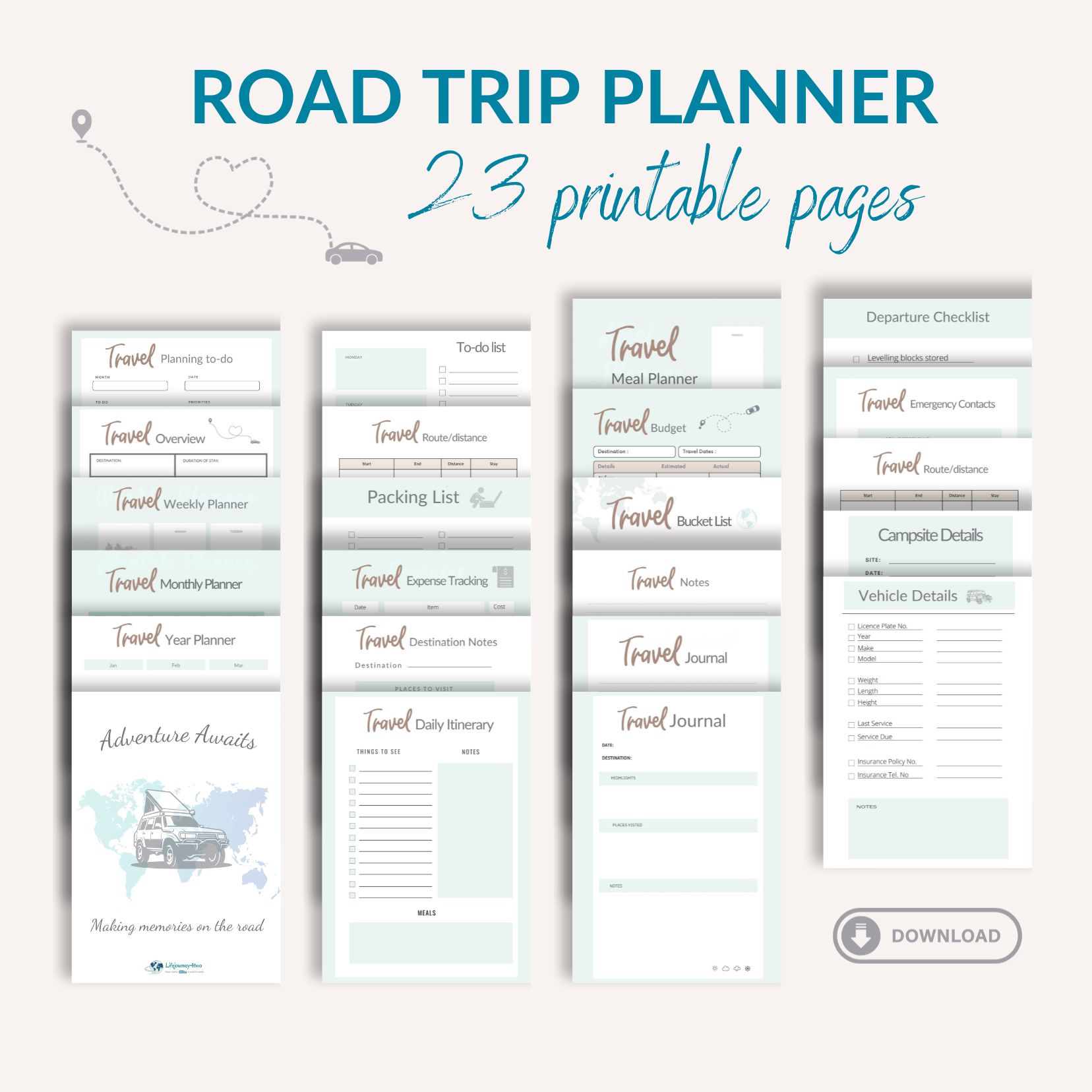

Video of Our Central Kalahari Camping Trip
About the Central Kalahari Game Reserve (CKGR)
Botswana’s Central Kalahari Game Reserve is within the Kalahari Desert, a huge region that stretches from the western side of South Africa through Botswana to Namibia.
It is currently on the Tentative list of the UNESCO site to be considered a place of outstanding universal value
The CKGR is the largest reserve in Southern Africa and the second largest in the world. Its 52,800 square kilometres consist of arid savannah, red sand dunes, fossilised (dry) river valleys, clay pans, scrub bushes and low-lying trees.
It covers about 9% of Botswana.

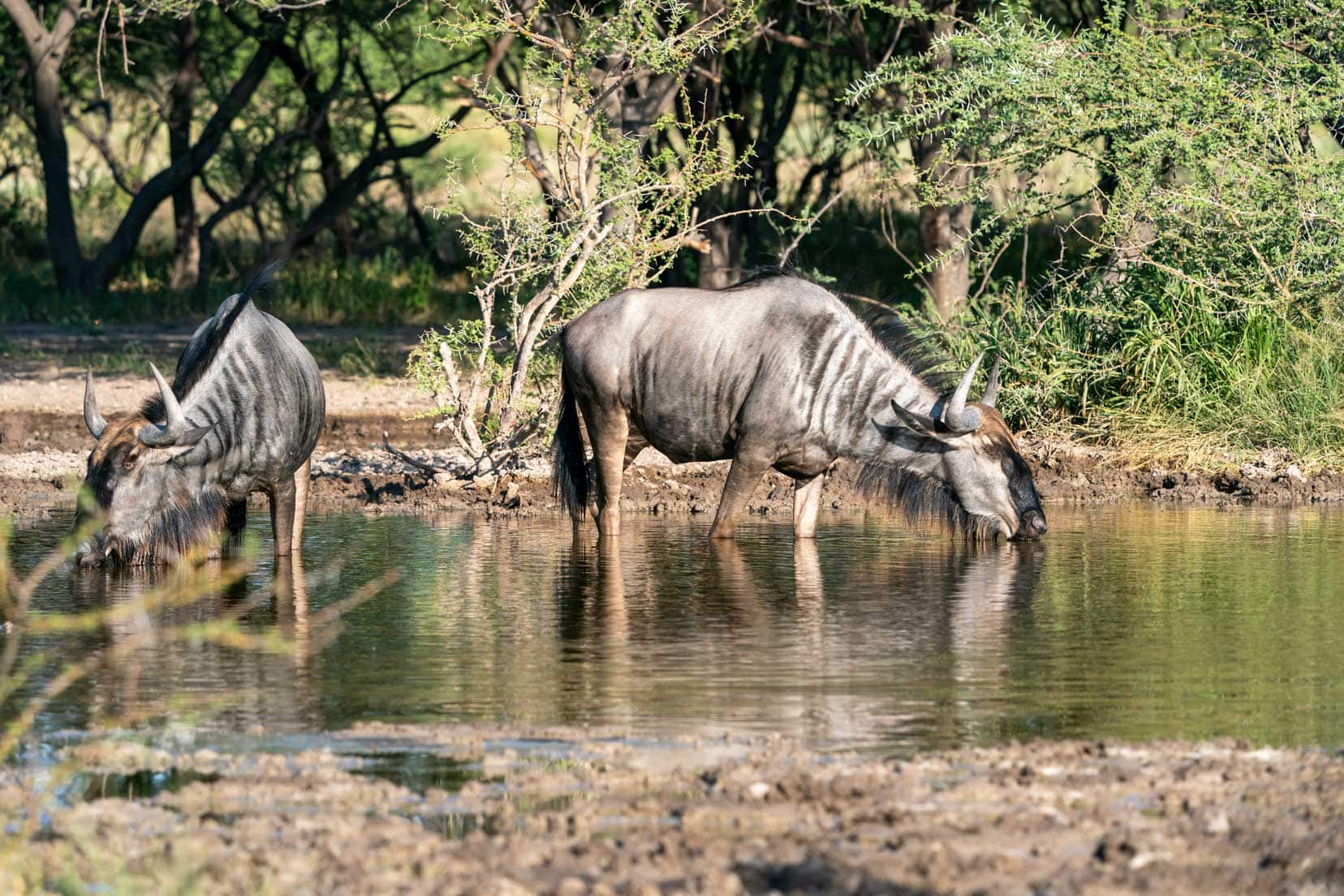
After the start of the summer rains, from January to April, the clay pans become rich grasslands and a magnet for wildlife. The plains teem with springbok, gemsbok and wildebeest.
The most popular areas of the Central Kalahari Game Reserve are the northern region and Deception Valley. In fact, researchers Mark and Delia Owens carried out their studies on the Kalahari brown hyena and the Kalahari lions in Deception Valley.
Their book, the Cry of the Kalahari, an international bestseller published in 1984, makes for an excellent introduction to the Kalahari and certainly whets your appetite for a trip to this remarkable wilderness.
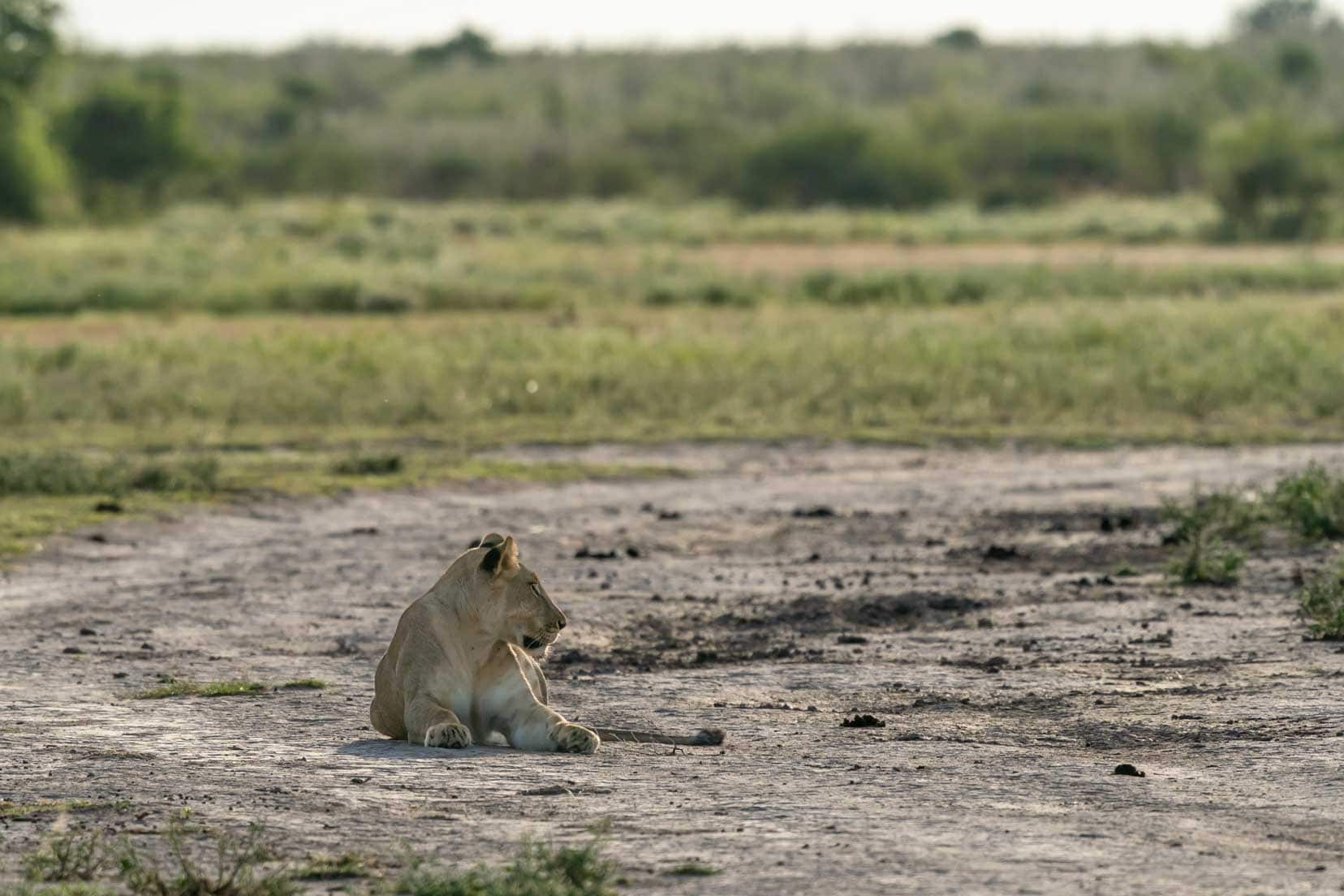
The Central Kalahari Game Reserve Origins
In 1958, a survey of the Central Kalahari area was done to ensure the protection of the Basarwa people (also known as the San or bushmen) and the game they depended on. As a result, it was recommended that the area become a game reserve.
Therefore, in 1961, 52,800 square kilometres of the area became the Central Kalahari Game Reserve to protect the wildlife, plants, and the hunter/gatherer way of life of the Basarwa people.
Unfortunately, the Botswana government later forced the San people to relocate outside the park, and today, only a few remain in the park. They are around the Khutse / Xade area.
It wasn’t until 1998 that the Central Kalahari Game Reserve was opened to tourists.
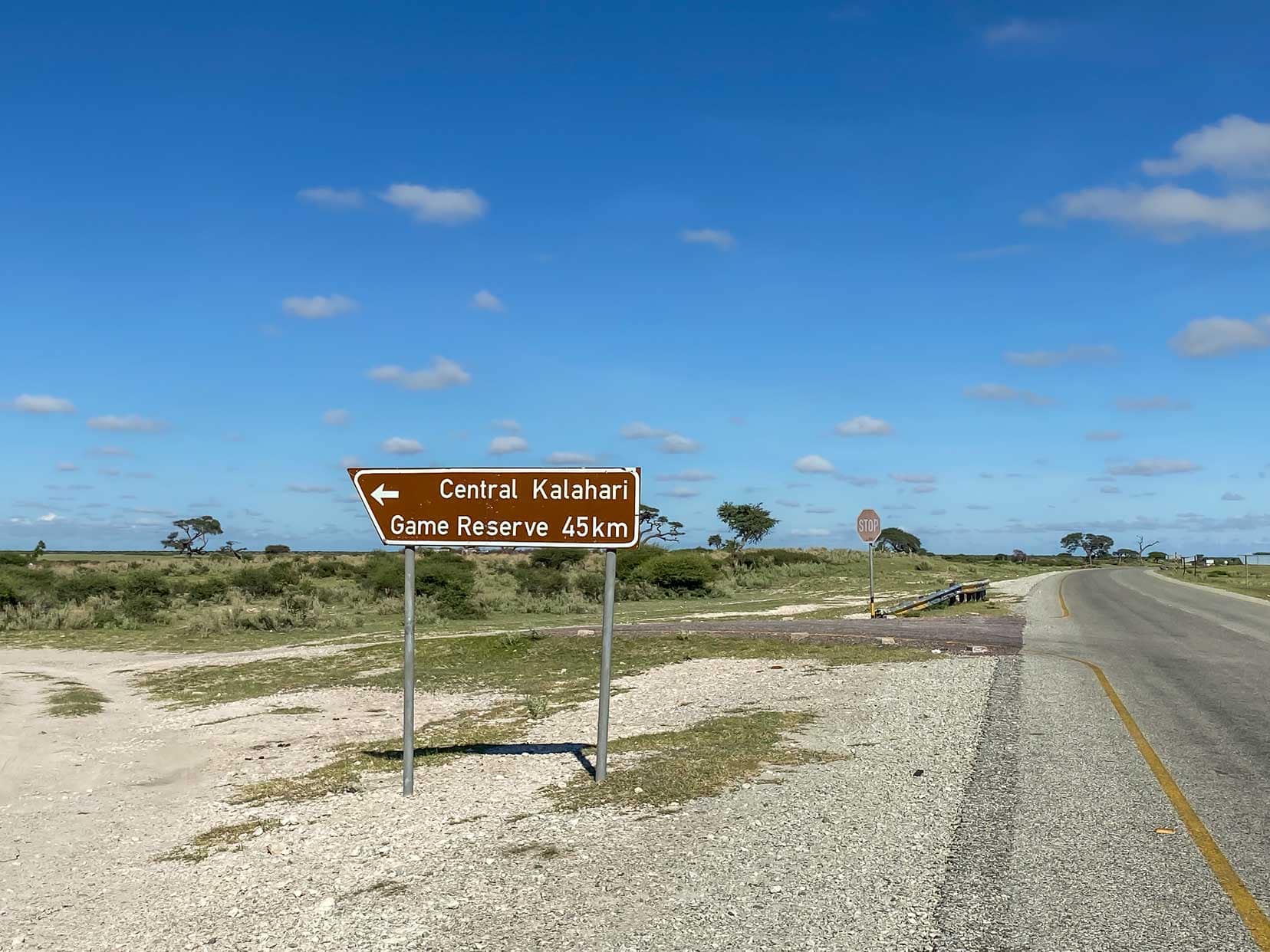
Camping information for Central Kalahari Game Reserve
The northern part of the Central Kalahari Reserve is the best area to explore. Most of the campsites are located here, where most wildlife is seen. The most popular are Deception Valley, Piper Pan and Sunday Pan.
Some of the CKGR campsites have no facilities at all, while others have basic facilities consisting of a drop toilet, bucket shower and a firepit. Most are placed remotely and far from any neighbouring sites.
There aren’t any fences in the reserve so you must always be on your guard – lions could walk through camp anytime.
💡 TIP: Unless you have stacks of water, we’d recommend that you don’t use the bucket shower as it is much more efficient to have a wash down with a flannel and a small tub of water. (One of the lessons we learnt on this trip – but we at least had to try a bucket shower at least once in our life hey!)
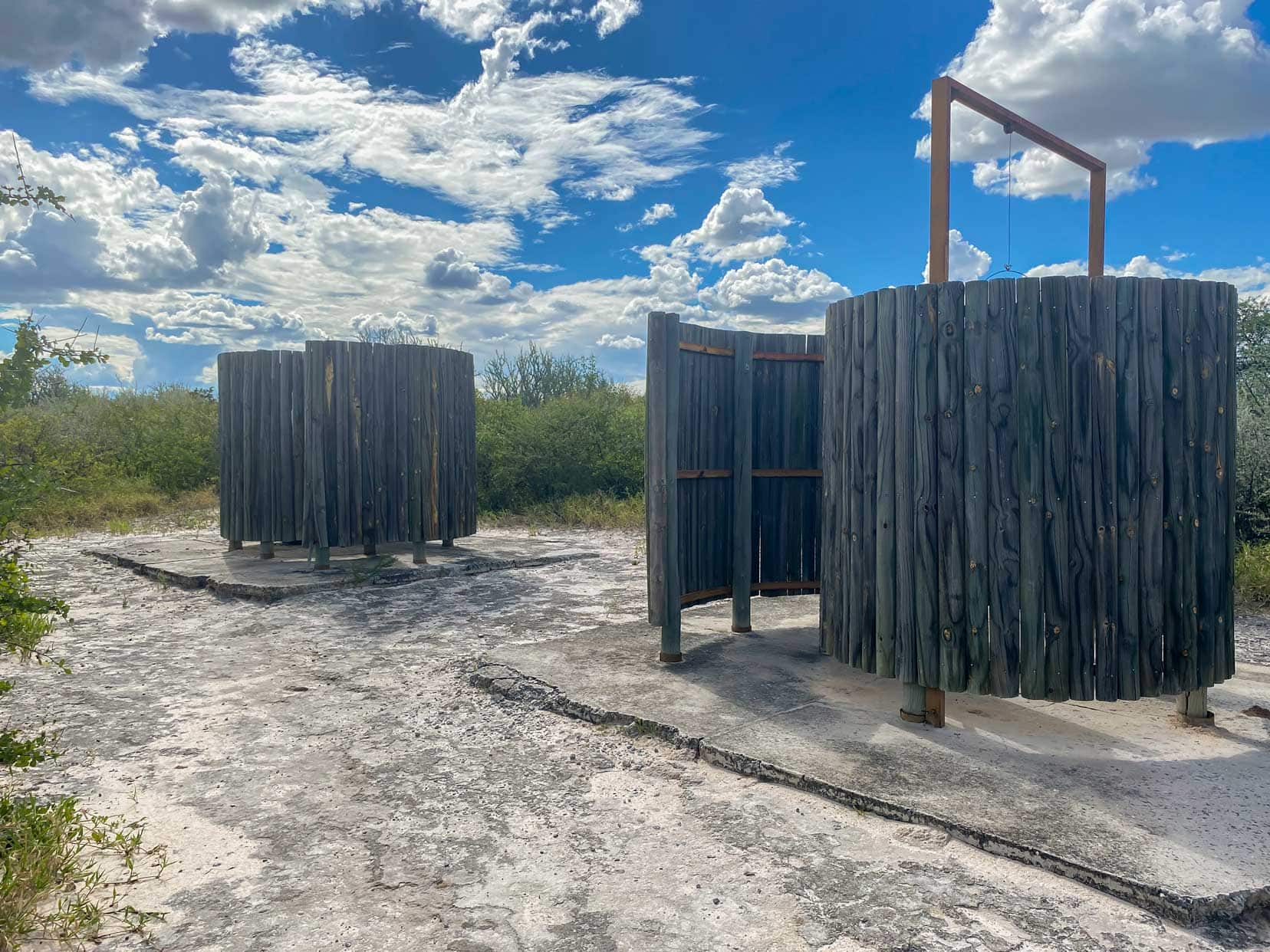
We stayed at two of the best campsites, Piper Pan Campsite, one of the southernmost campsites of northern CKGR, and Sunday Pan Campsite, further north.
Both have loops and circuits around the pans which are great for driving along to spot wildlife, and both pans have waterholes, which are great places to hang out. This is especially true in the early morning and late afternoon, evening.

Many of the campsites are bookable through Bigfoot Tours (including Piper Pan and Sunday Pan), and some of the others through Botswana Parks and Wildlife (DWNP).
- Bigfoot Tours Contact Details: Email: [email protected]
- DWNP Contact Details: Email: [email protected]
Alternatively, you can use a booking agency, because it can be difficult contacting the campsites, especially if you are calling from international numbers and many camps sites don’t have websites.
Therefore, we used Ultimate Routes to suggest and organise our itinerary and campsite bookings. This took an awful lot of hassle out of our trip planning.
💡 TIP: Book well ahead to ensure you can get the campsite you want – especially if you will be travelling in the peak season and then try to book at least a year ahead.
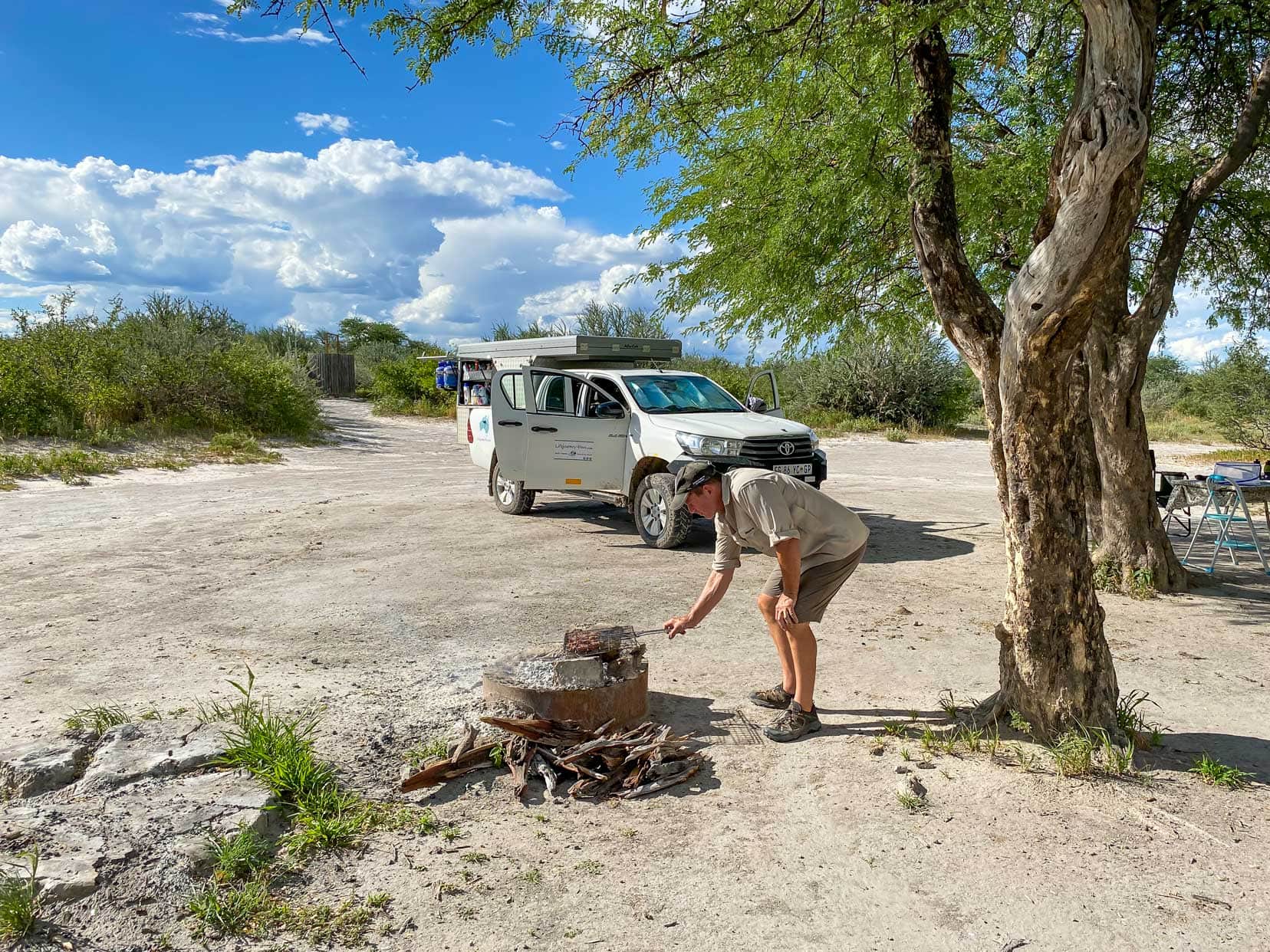
Some CKGR Regulations to observe while camping in the reserve include:
- You can only access the reserve with a permit or a voucher showing that you have booked one of the campsites.
- 40 Km/hr speed limit in the park
- You must stay in your campsite between sunset and sunrise
- Walk no more than 25 metres away from your vehicle – and then only if no dangerous animals are in the vicinity
- Only light fires in the designated areas and make sure fires are extinguished and ash is buried
- Burn any combustible litter and take all other litter out of the reserve on your departure
- Do not drive on the pans as it causes long-term ecological damage
- Do not feed any animal

Best Entrance Gate for CKGR Camping
There are four entrance gates to the Central Kalahari Game Reserve:
- Matswere Gate — in the northeast of the reserve, turn off just north of Rakops (45km / 2 hours to the gate)
- Xade Gate — in the southwest of the reserve, turn off just south of Ghanzi (170 km / 4 hours to the gate)
- Tsau Gate — in the north, turn off just past Khuke Village (40 km / 1 hour to the gate)
- Khutse Game Reserve — in the south, but then need to cross to Xade gate
The easiest gate to use when camping in the northern part of CKGR is Matswere Gate. The turn-off towards to gate is just passed the town of Rakops and is signposted from the road.
The distance from the main road to Matswere Gate is 45 kilometres, but the track is sandy and makes for slow going. We travelled along it at an average of 25km per hour and it took us about two hours.
At the gate, you can buy firewood if necessary, and you will be asked to sign in to the visitors’ book. You must also pay the Central Kalahari Game Reserve fees.
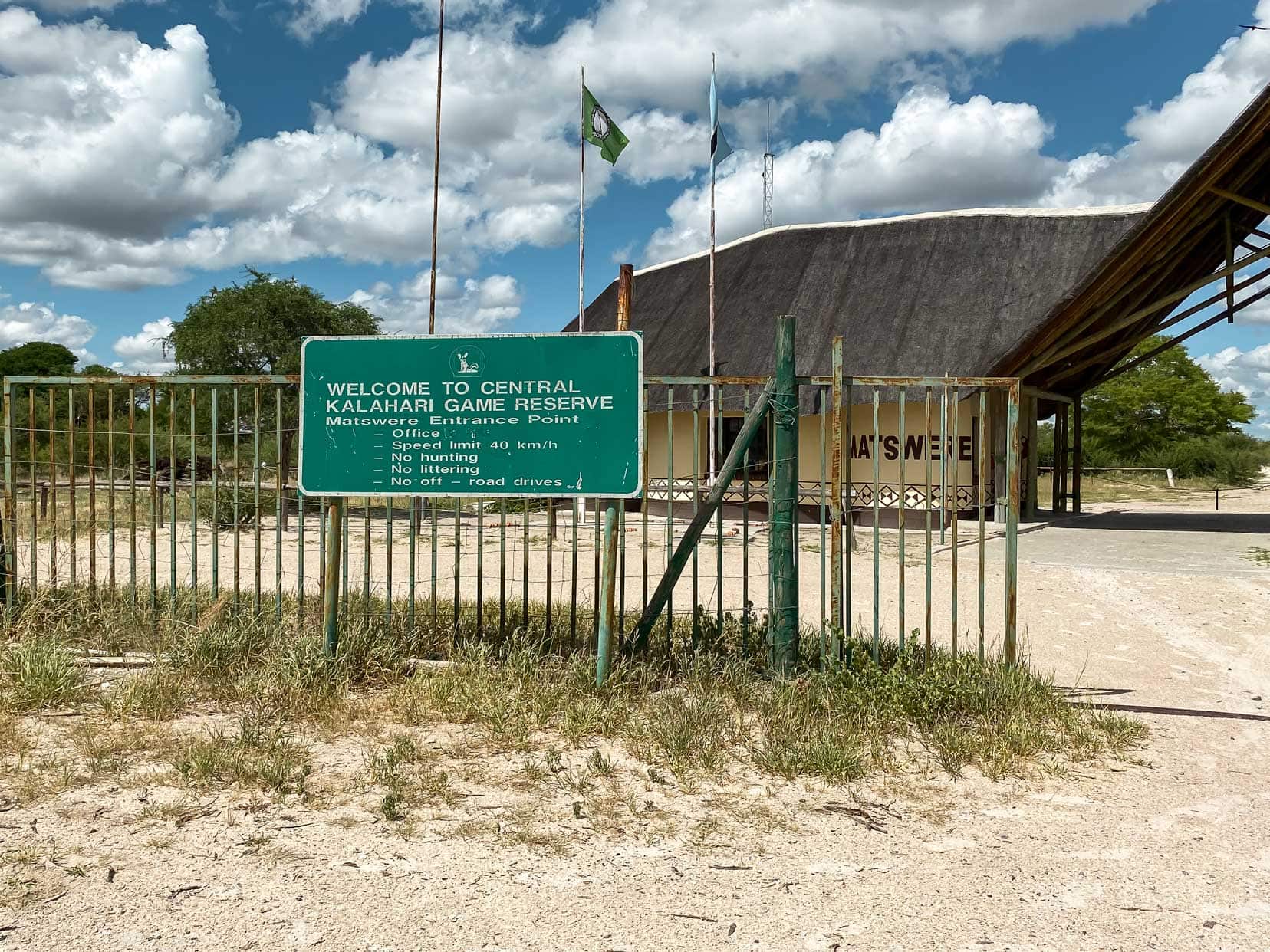
Central Kalahari Game Reserve Fees
Once at the gate, you will need to stop and show your campsite booking voucher and pay your Game Reserve entrance fee charges.
Note that you need to pay per person per day (not per night). We were camping in the reserve for 5 nights but needed to pay for 6 days’ game reserve fees.
Also, if you are paying the reserve fees at the gate you need to pay in pula. Alternatively, you can pay the fees ahead of time through the Botswana Parks and Wildlife (DWNP) in Maun (which also has a good choice of accommodation) Gaborone or Ghanzi with a credit card.
Fees for entering the Central Kalahari Game Reserve differ depending on whether you are a citizen, resident, or non-resident.
The following fees were correct as of January 2023 and so far remain unchanged as of January 2024.
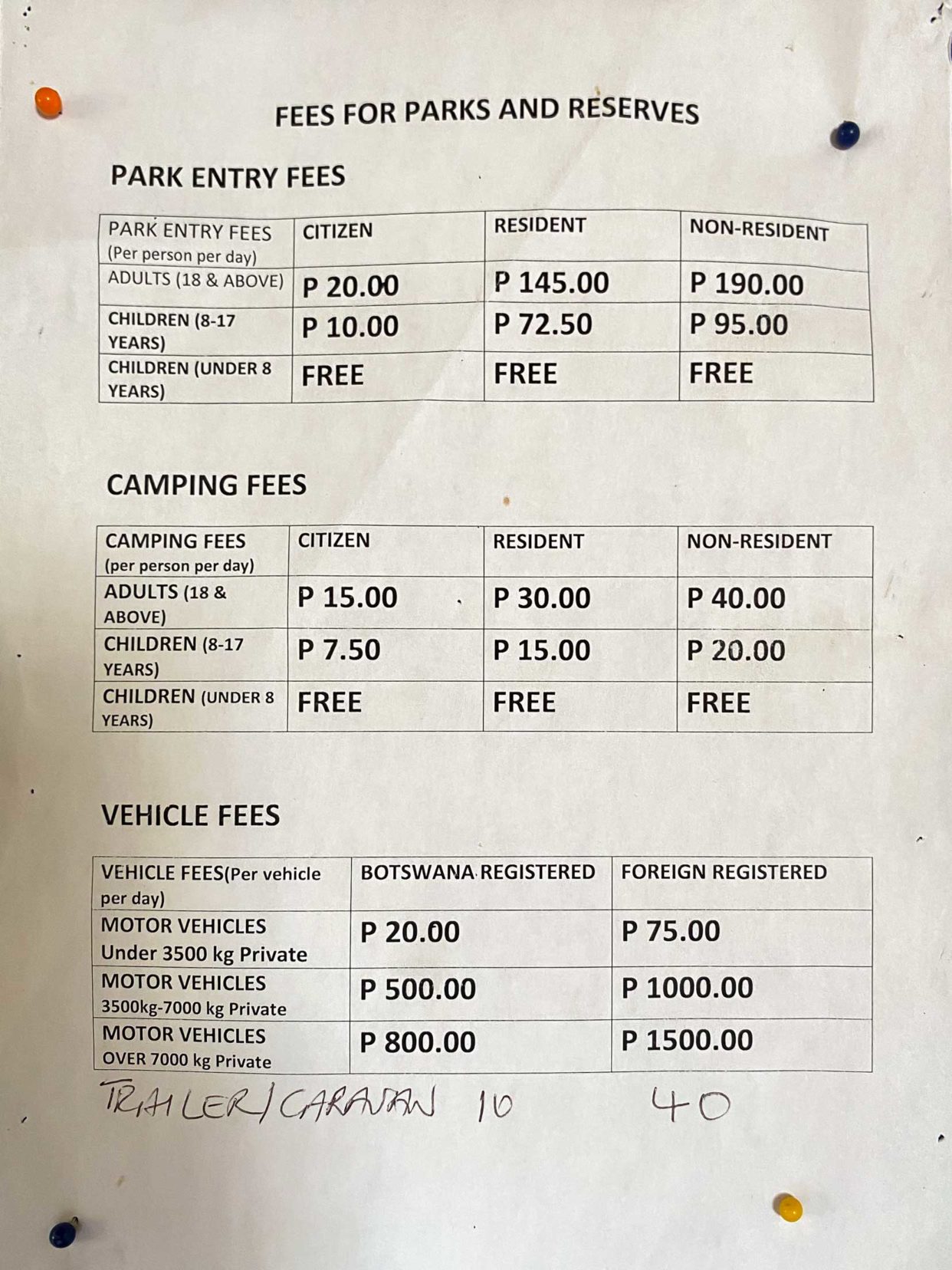
Central Kalahari Game Reserve Campsites
Most of the information that we have read states that Piper Pan is one of the best campsites, and the Big Foot Tour representative at the gate confirmed that it was indeed the most popular. Sunday Pan is also one of the most booked sites.
Below, we set out details about each camp as well as recount our experience of each.
Piper Pan Campsite
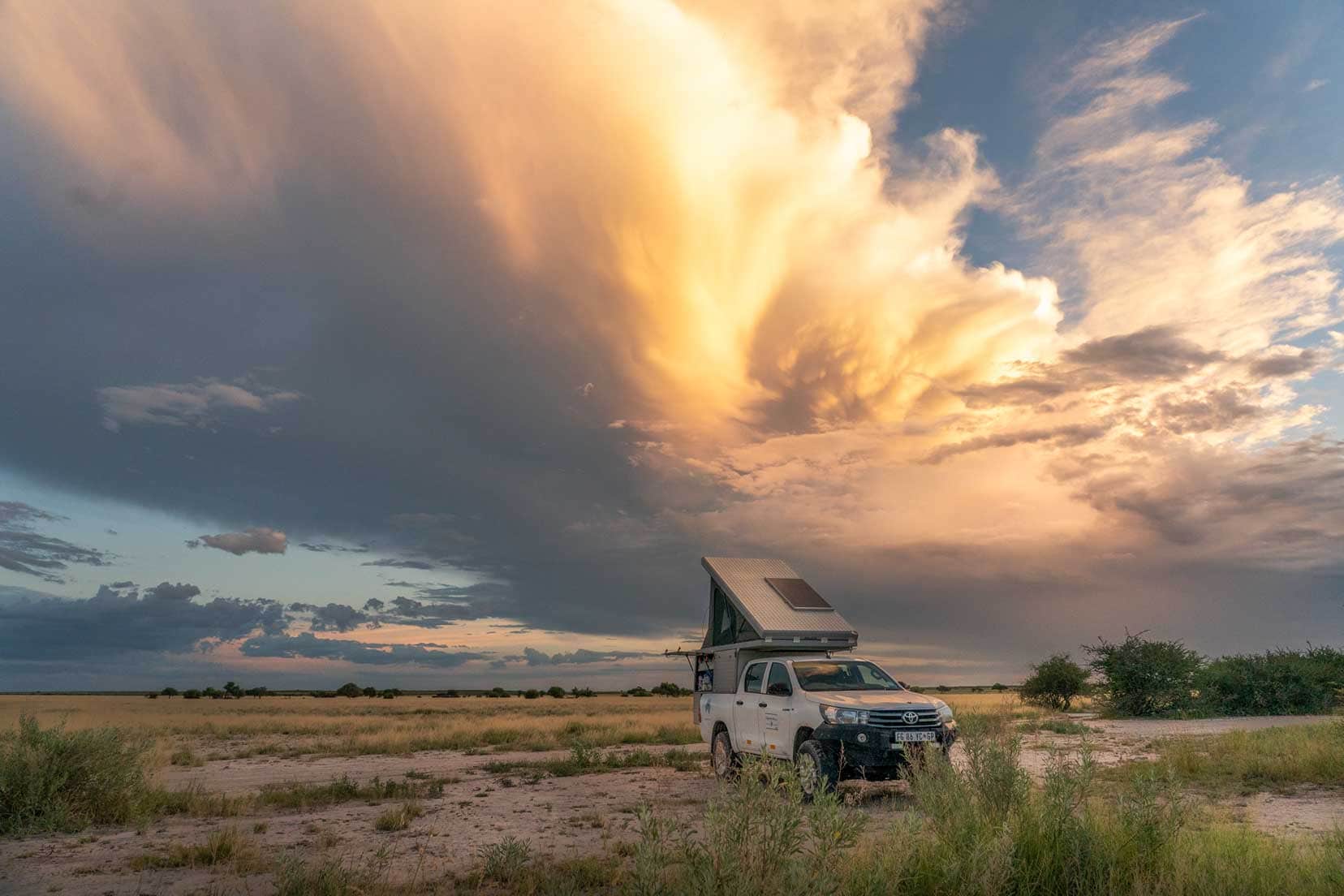
Piper Pan Details
Distance: From Matswere Gate: 143 km
(Note that about 20km before the campsites at Piper Pan, there is a 10km stretch of badly corrugated sand that will feel like you’re in a liquidiser.)
Facilities: Drop toilet, bucket shower, firepit
Piper Pan Campsites: There are two campsites at Piper Pan.
Campsite 1 is right beside the pan, so has great views and it is only a short drive to the waterhole. We would recommend this one.
Campsite 2 is further south and set off the main track in scrub and trees. (see the Central Kalahari Game Reserve map)
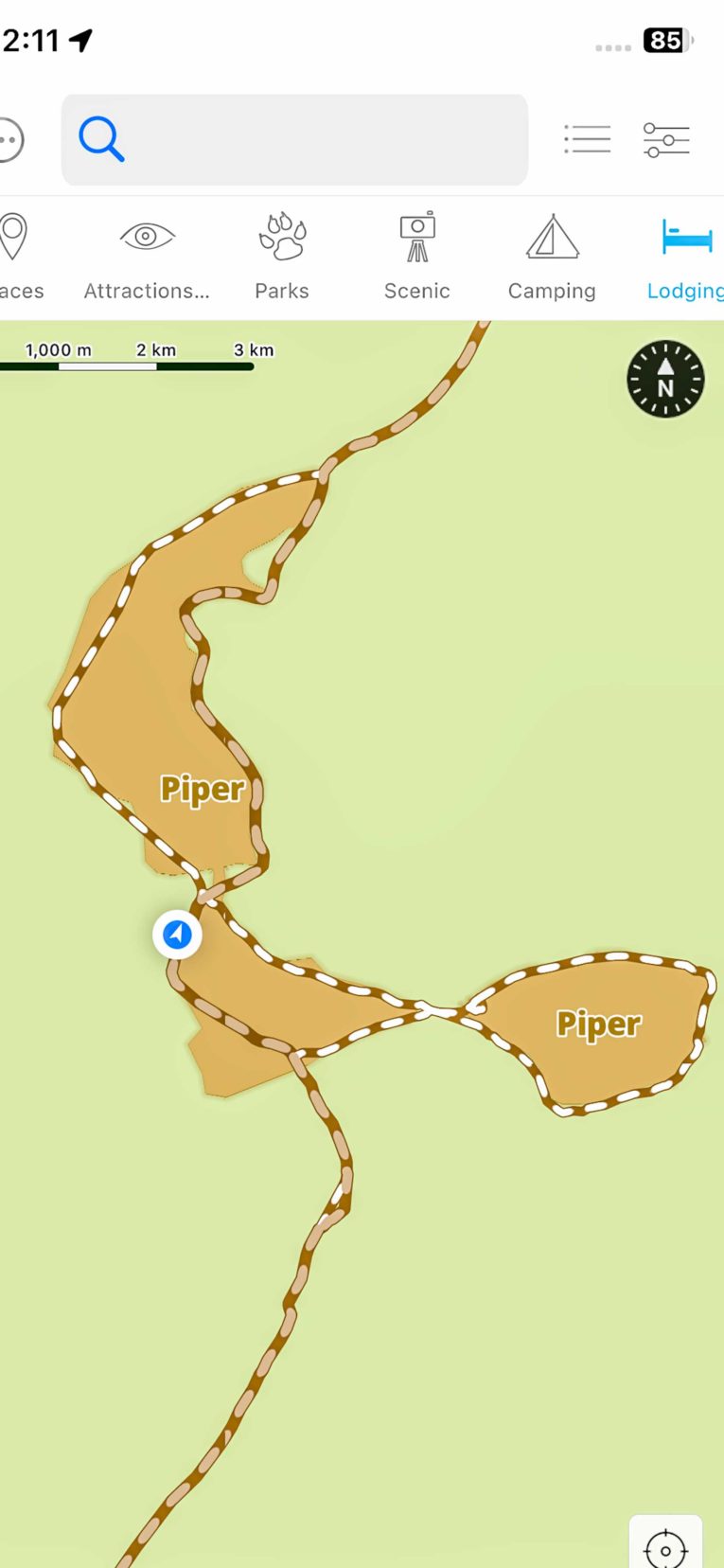
Piper Pan Campsite Experience
We arrived at Piper Pan hot and bothered. Leaving the main road near Rakops, to eventually arrive at Piper Pan campsite, took us eight hours.
With an outside temperature of 38 degrees and the car bouncing and bumping along almost 180 kilometres of sandy, and often badly corrugated tracks, you can imagine that we were wondering whether it was all worth it.
On the drive through the arid savannah landscape, towards Piper Pan, we spotted a variety of wildlife. A few bat-eared foxes, disturbed by our bouncing bucky, had made a dash across the pan in Deception Valley.
And it didn’t take us long to realise that kori bustards and secretary birds were common stalkers amongst the long grasses of the Central Kalahari Reserve.
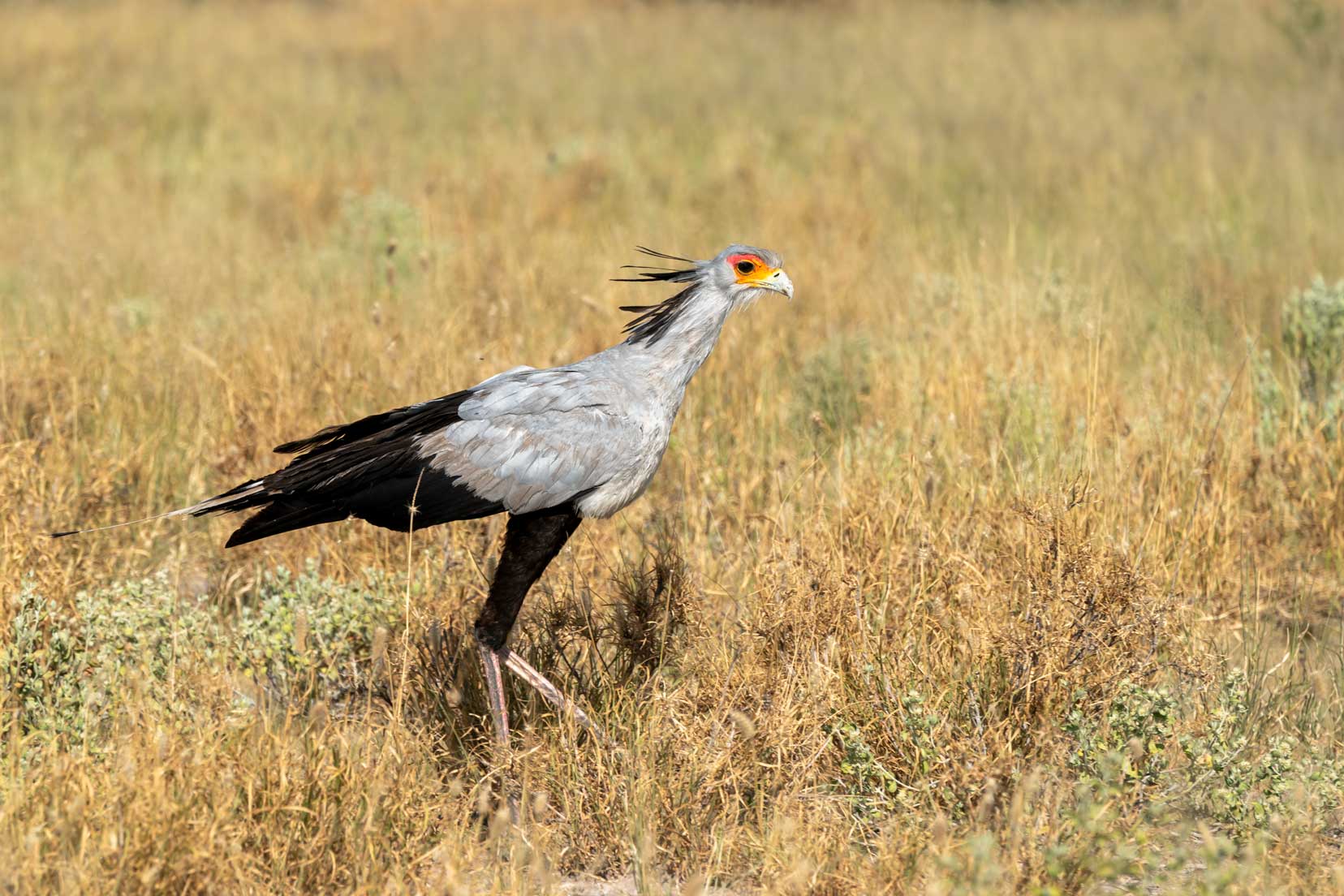
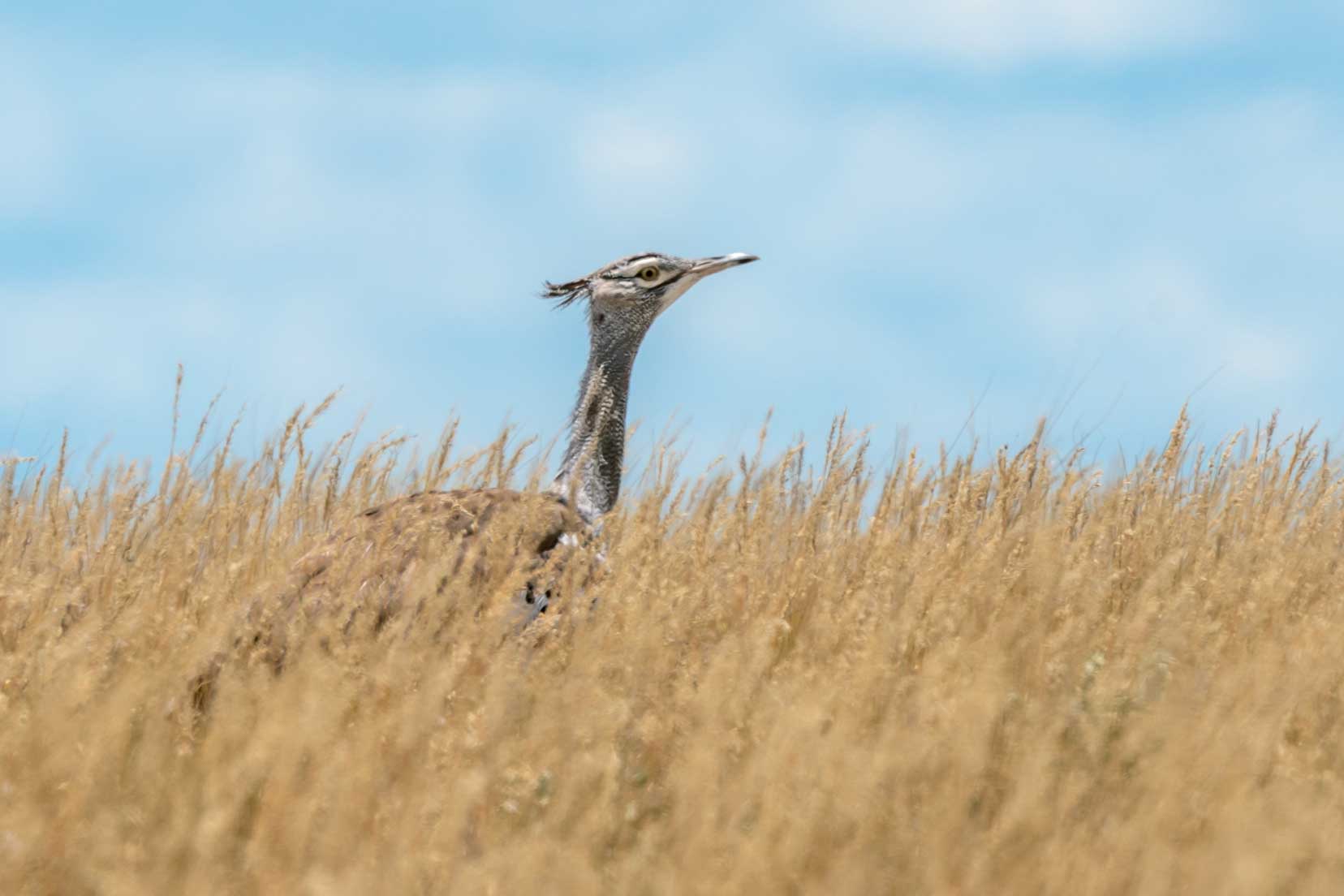
As we drove into Campsite 1, right on the edge of Piper Pan, springbok nibbled at the bushes around camp, and the pan right beside us, full of golden swathes of knee-high grass, teemed with springbok and wildebeest.
As soon as we parked, two sparrows began pecking at our car’s side mirrors. They continued to do that for the two days we were there. Even when we covered the mirrors up, they continued to peck at their reflections on the windscreen!
By the time we left Piper Pan, we were wishing we were staying longer. Two nights were not nearly enough.
Vivid red sunrises and sunsets punctuated our days of looping around Piper Pan and hovering around the waterhole in the early morning and late afternoon until the fading light ushered us back to camp.
At night the springbok and wildebeest headed towards the edges of the pan, but in the day, hundreds grazed on the golden grasses.
Black-backed jackals trotted around, checking out their territory and gemsbok, though pretty skittish, occasionally wandered by.

One evening, we arrived at the waterhole to find five marabou stork strutting their stuff. They seemed oddly out of place, as we’d only ever seen them hanging around the rivers when we did our self-drive through Kruger National Park.
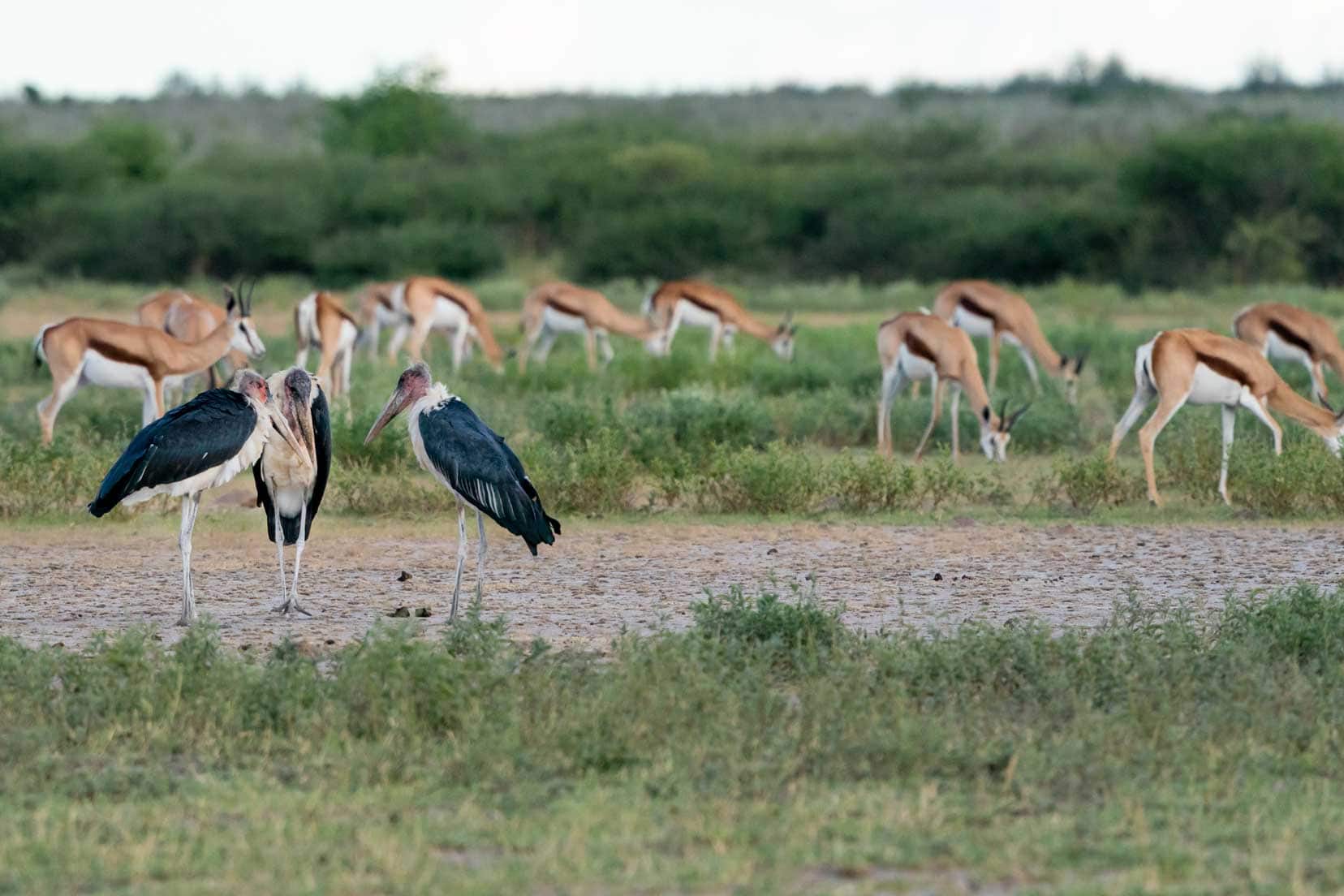
Our favourite part of Piper Pan was the waterhole. The pan stretched out behind it, and the animals came in their droves to drink and grazed around the edges before slowly moving on.
We were sometimes surrounded on all sides by animals going about their business, unperturbed by the large white object that sat quietly amongst them.
The silence around us was only broken by the pig-like grunts of the springbok chatting to each other and the crack of antlers from the young male springbok tousling together.
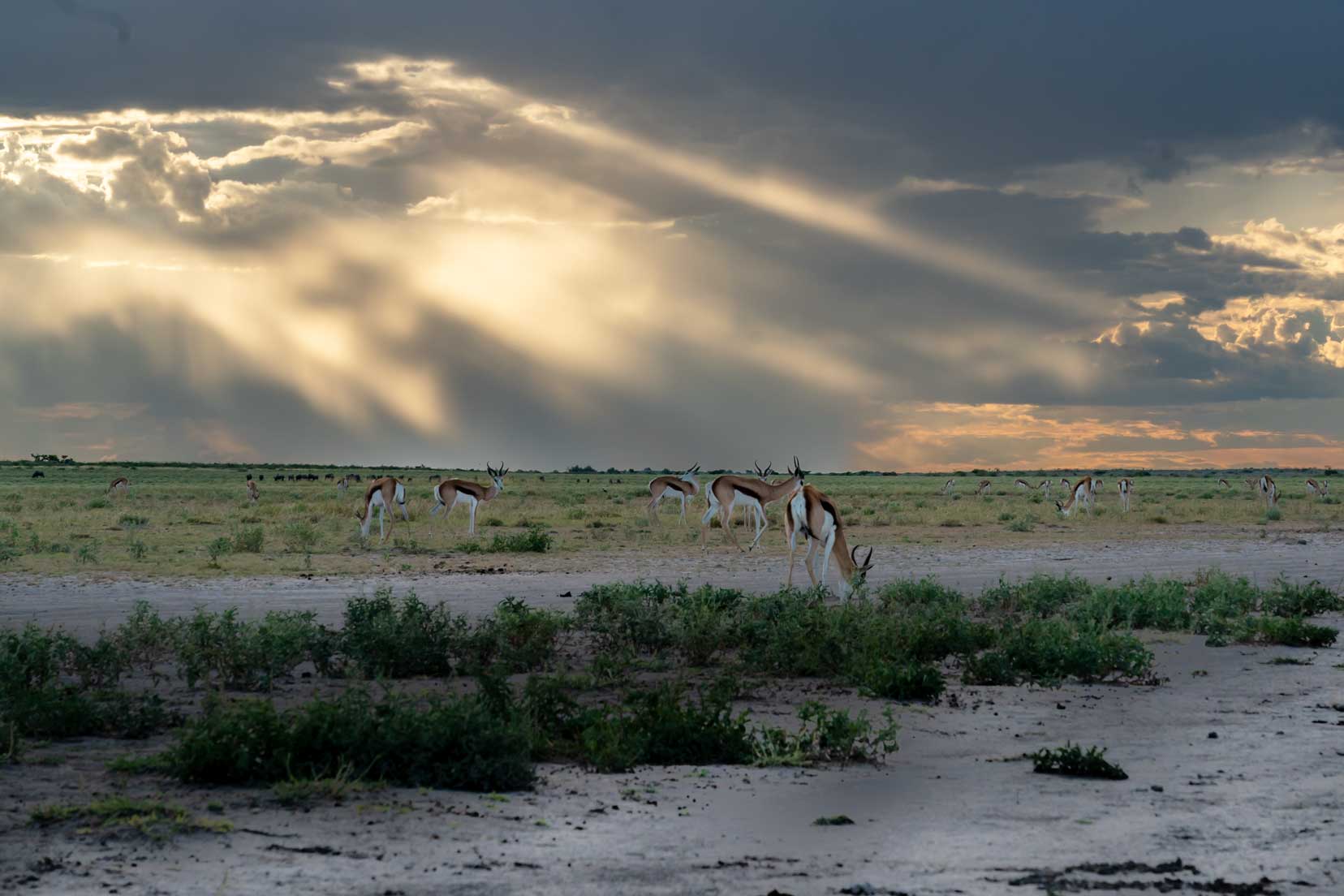
In the morning we saw fewer grazers out and about, but the black-backed jackals seemed to hang around the area. On our last morning, just as we were about to drive away, four lionesses crossed the track in front of us.
They seemed uninterested in the nearby grazing springbok and sauntered on into the shade of the bushes. The jackals fell in line trotting behind them and then interestingly, stood and howled at them for a while.
All lionesses were hidden behind the bushes, except for one which kept a beady eye on us for about half an hour, until finally deciding it was safe to lay down and get some of the eighteen hours of sleep she needed to fit into the day.
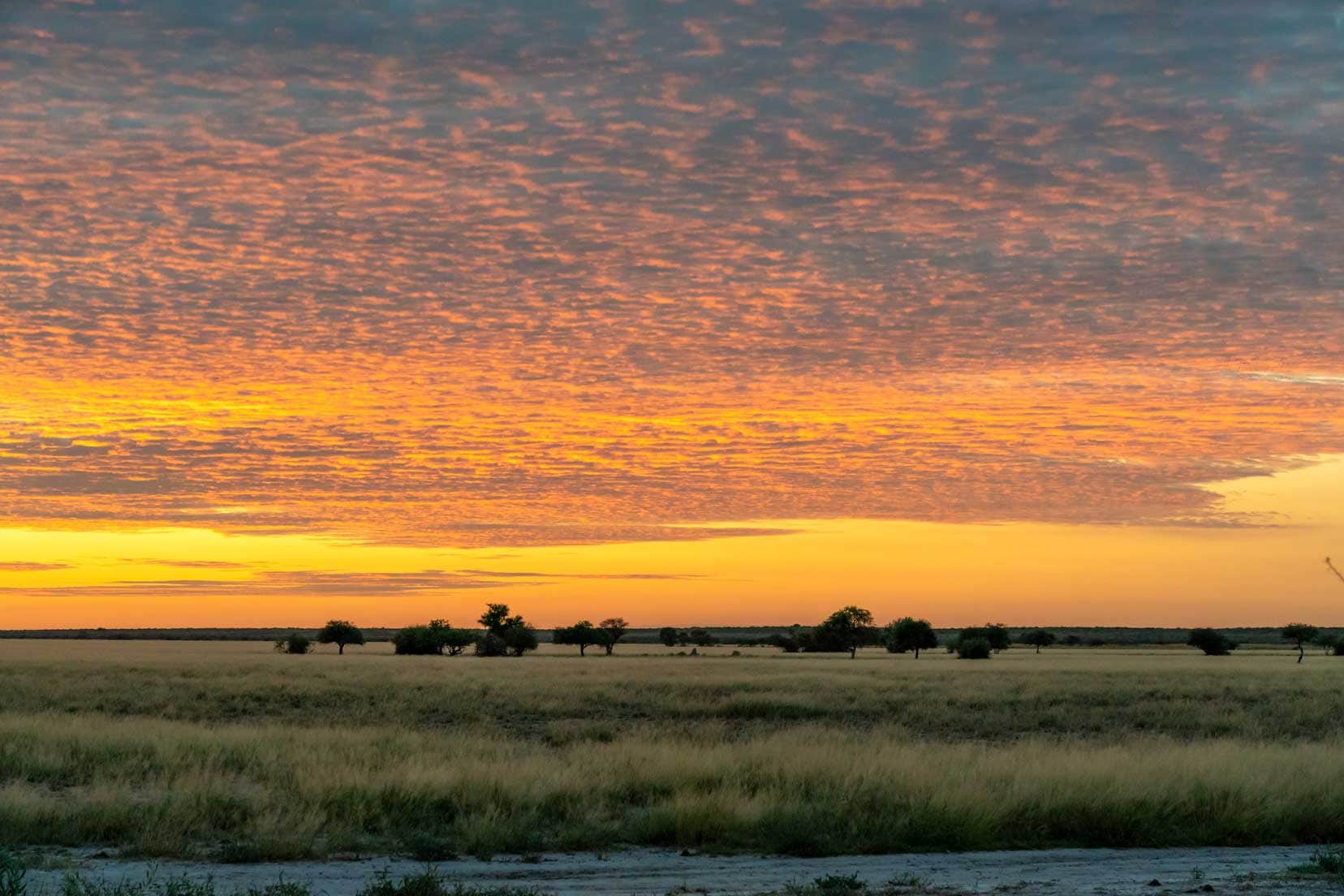
Sunday Pan Campsite
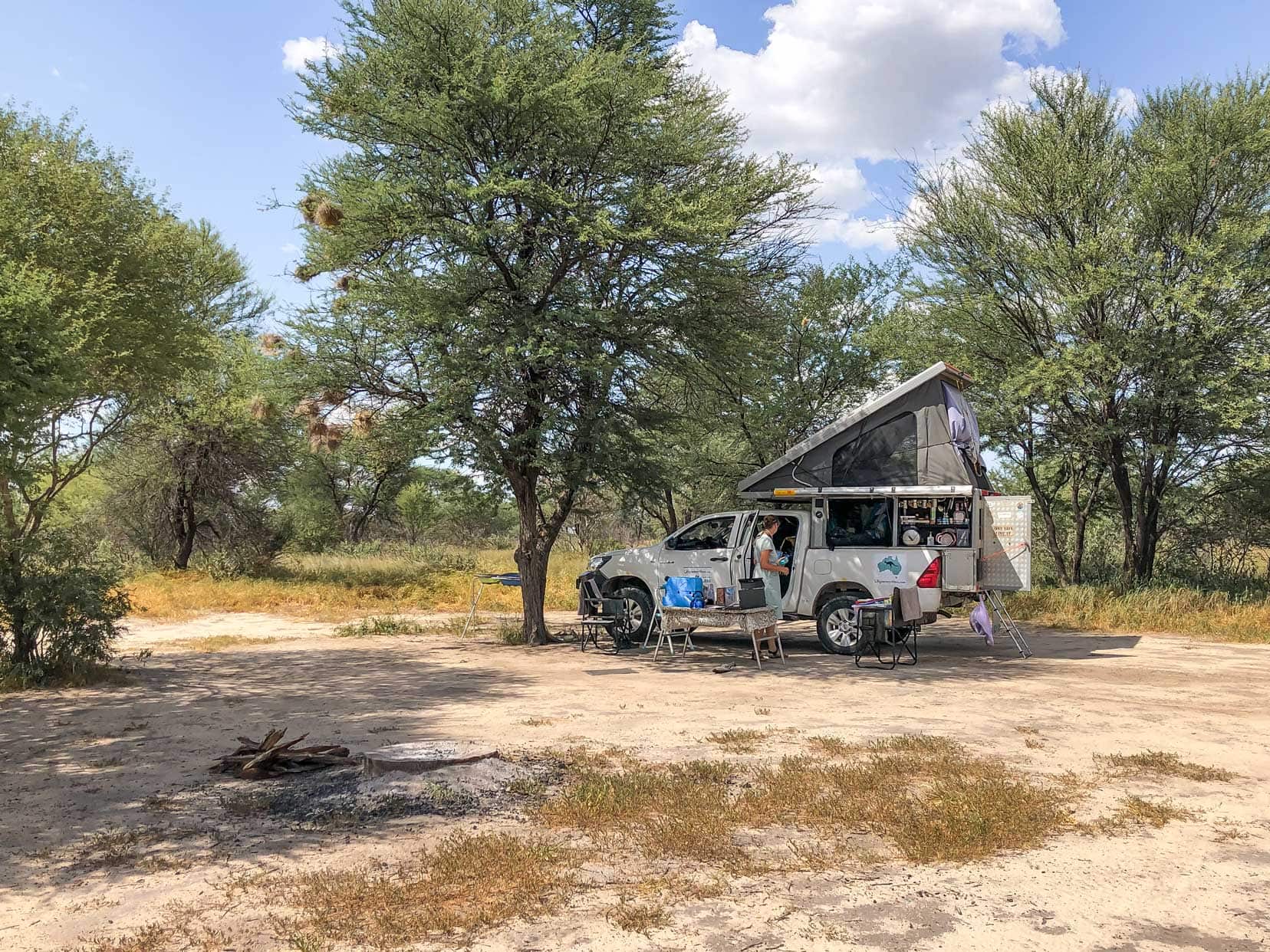
Sunday Pan Details
Distance: from Matswere Gate: 66 km
Facilities: Drop toilet, bucket shower, firepit
Sunday Pan Campsites: There are three campsites at Sunday Pan.
- Campsite 2 is near the pan but set back in a grove of trees.
- Campsites 3 and 4 are near the waterhole – both set back in trees but are close to each other. These are probably the best sites to have as they are nearer the waterhole.
- Campsite 1 is actually by Leopard Pan further north (see CKGR map)
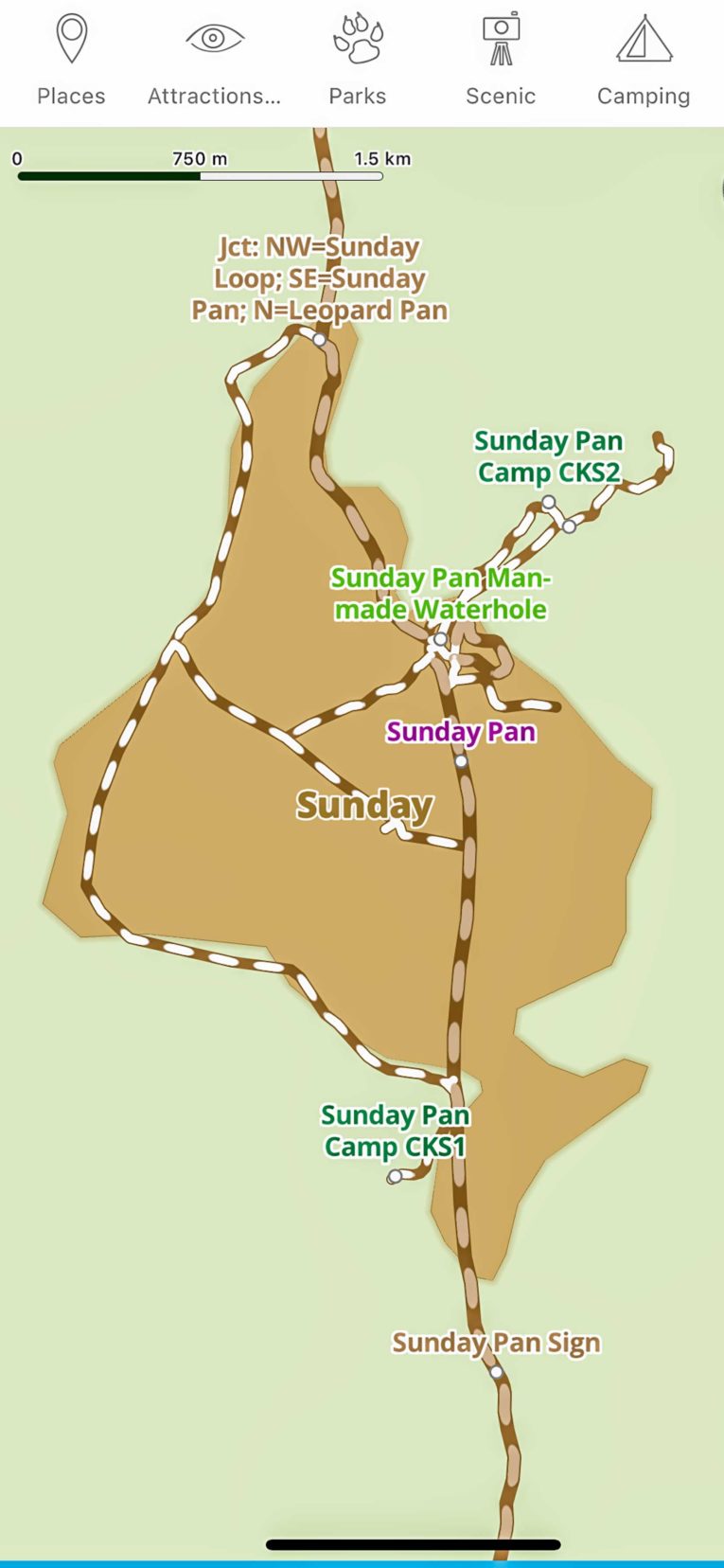
Sunday Pan Experience
We drove to Sunday Pan campsite via the western tracks and the 200km took us 9 hours. The landscape changed slightly, in that some areas were greener and there were more trees.
En route, we saw all the familiar faces we’d gotten used to over the past few days. Gemsbok, wildebeest, springbok, Kori bustards, secretary birds and the cute Cape Ground squirrels stood to attention when they saw us.
Once they realised that we were no threat they carried on munching the grass between their paws or, for those not too sure, diving into their burrow, only to peek out again a few seconds later.
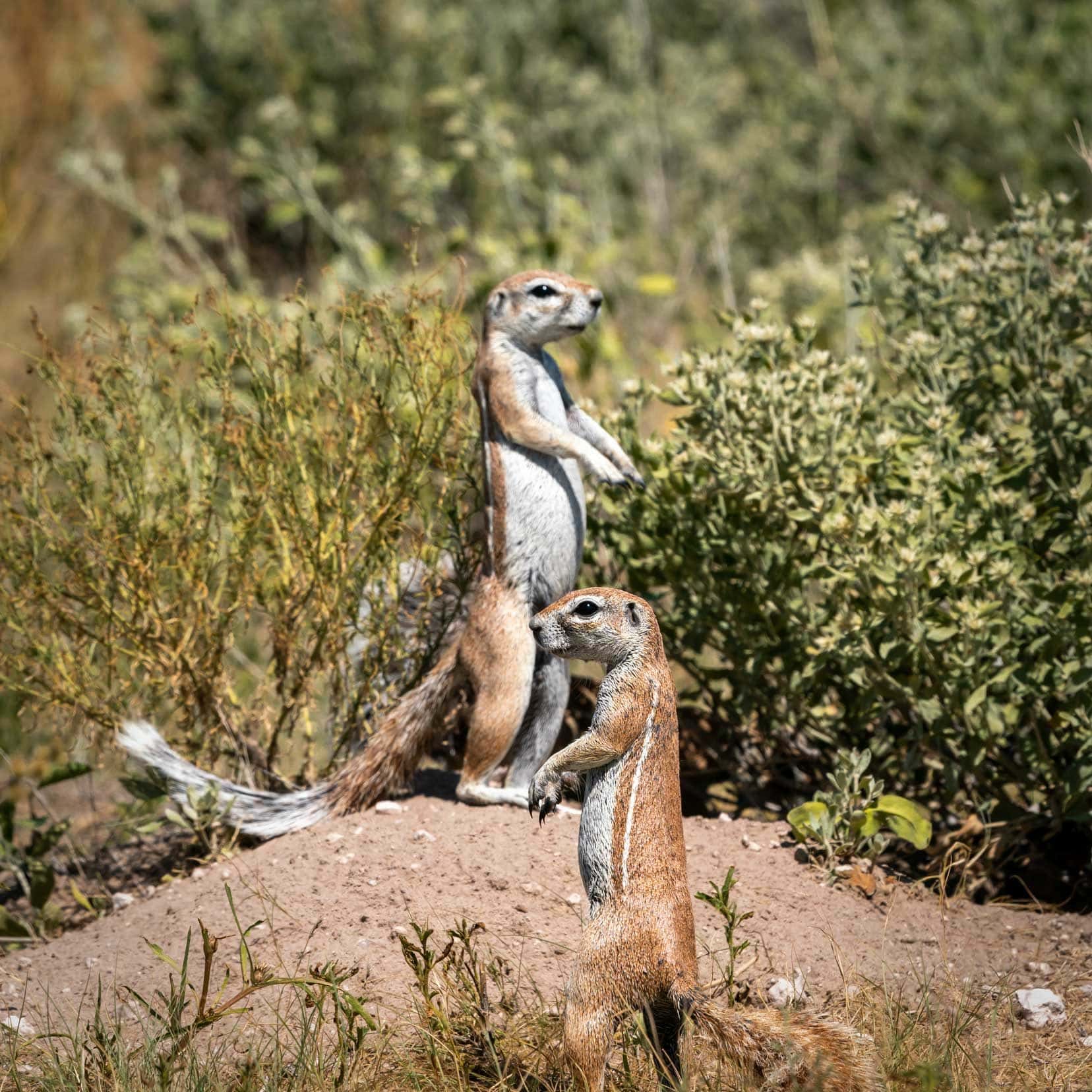
The cantankerous northern black korhaan let out its god-almighty screech every time we passed within coo-ee of it, and the ostriches set off at full pace jogging across the plains leaving their young chicks in their wake.
By the end of our time there, I can tell you that whatever respect I had for ostriches (and to be honest, I’ve never stopped to ponder that question), had diminished beyond repair. When scared by an approaching vehicle, the parents run for the hills leaving their fledgling flock miles behind to fend for themselves.
We saw this happen on so many occasions and the little ones were left bewildered, calling in the long grass for their long-since departed parents.

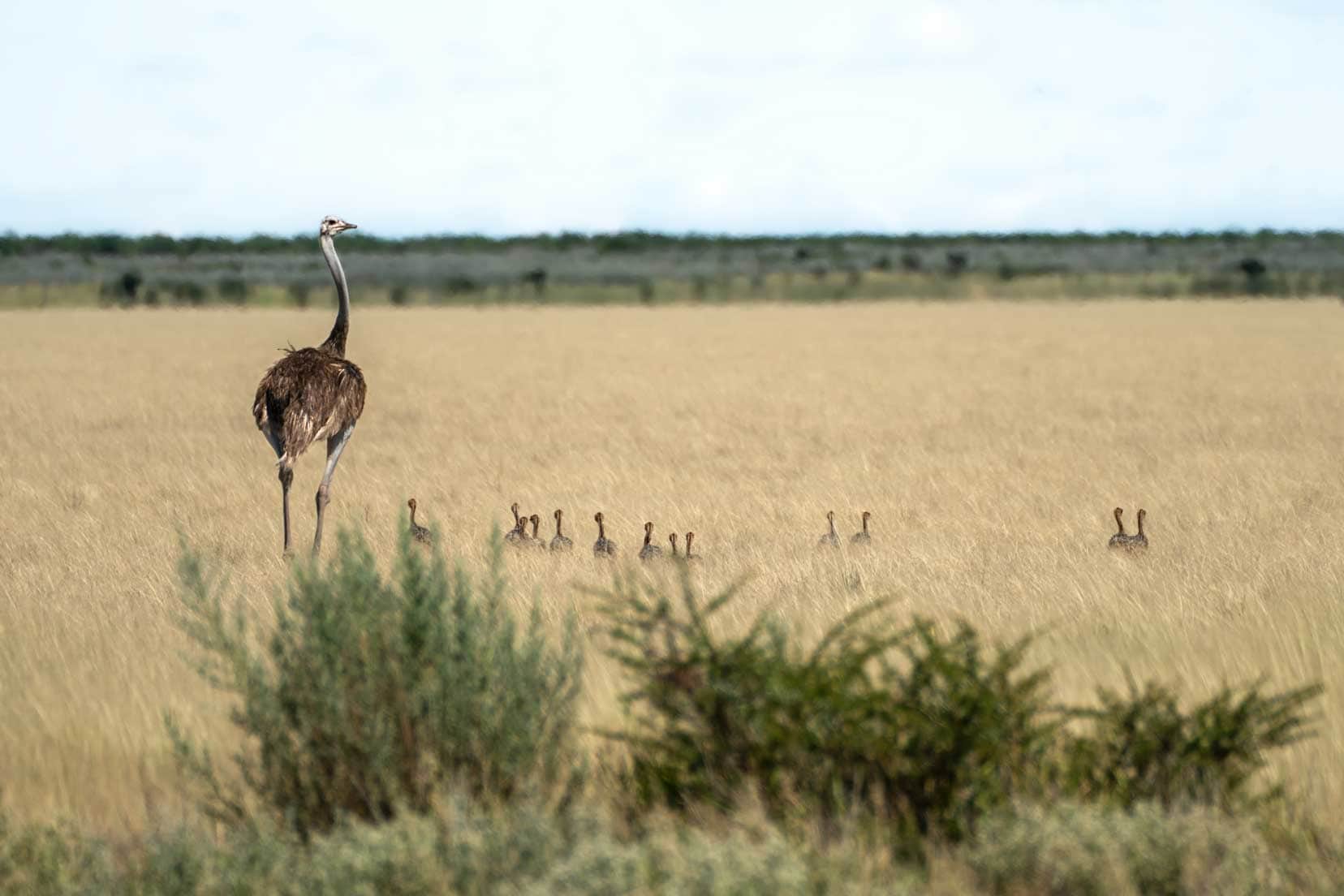
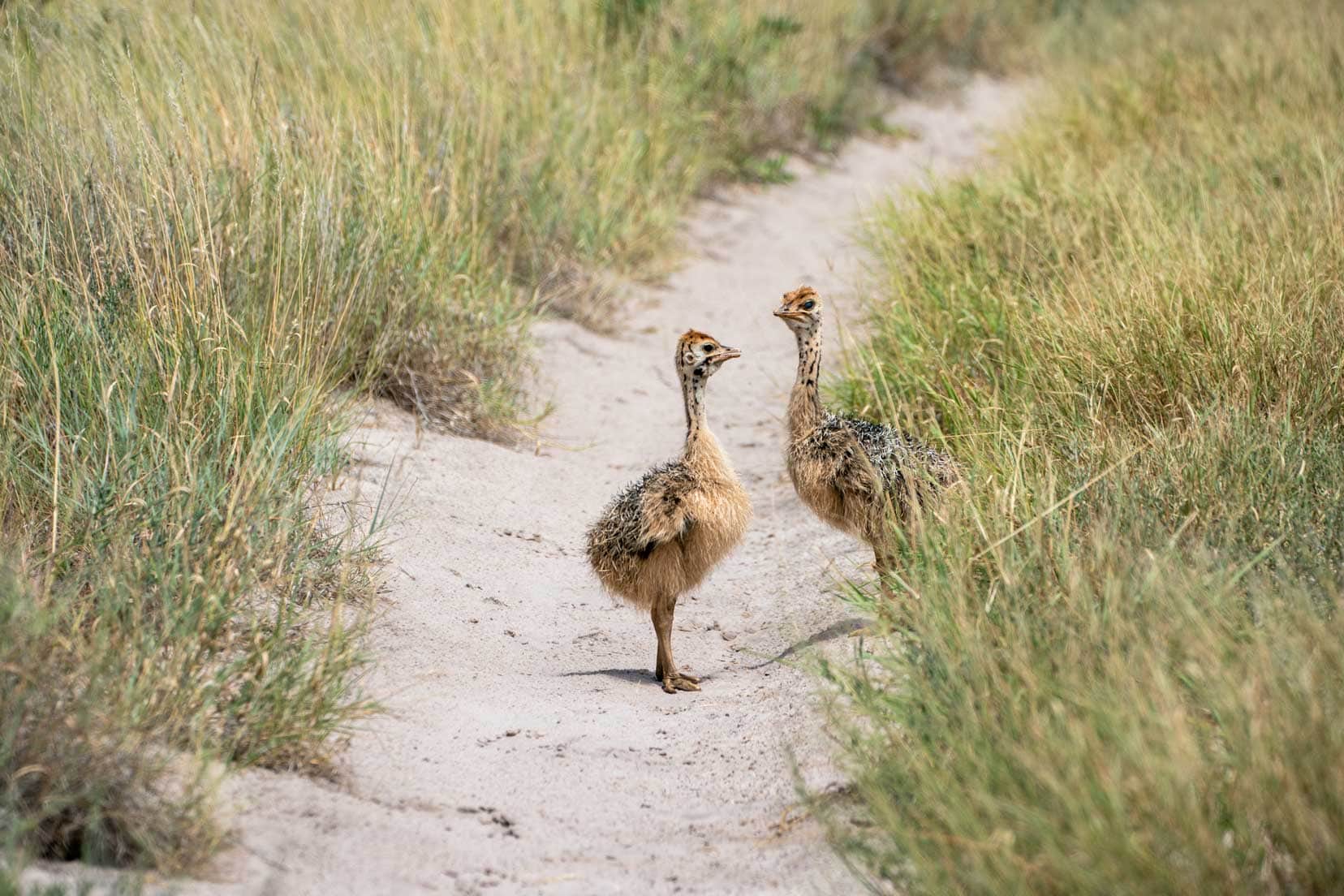
The Passage Valley had lush green areas where Springbok gathered and huddled under the trees avoiding the heat of the day. We were later told that this is a good area to spot lions.
We’d been in the reserve for three days, and although the rainy season, we’d had no rain. The daytime temperatures soared to the high thirties and the sandy ground reflecting the sun did nothing to help the oppressive heat.
We felt terrible when we disturbed wildlife sheltered under trees and bushes near the track, forcing them to flee out into the harsh heat of the day.
Arriving at the campsite, we were immediately welcomed by six white-browed sparrow weavers — obviously used to having campers they scurried around our feet waiting for us to pay attention.
They were quick to hop in the bowl of water placed on the ground for them and eager to get any crumbs we dropped. In the straw nests hanging above us, tiny incessant cheeps informed us that there were other mouths waiting to be fed.
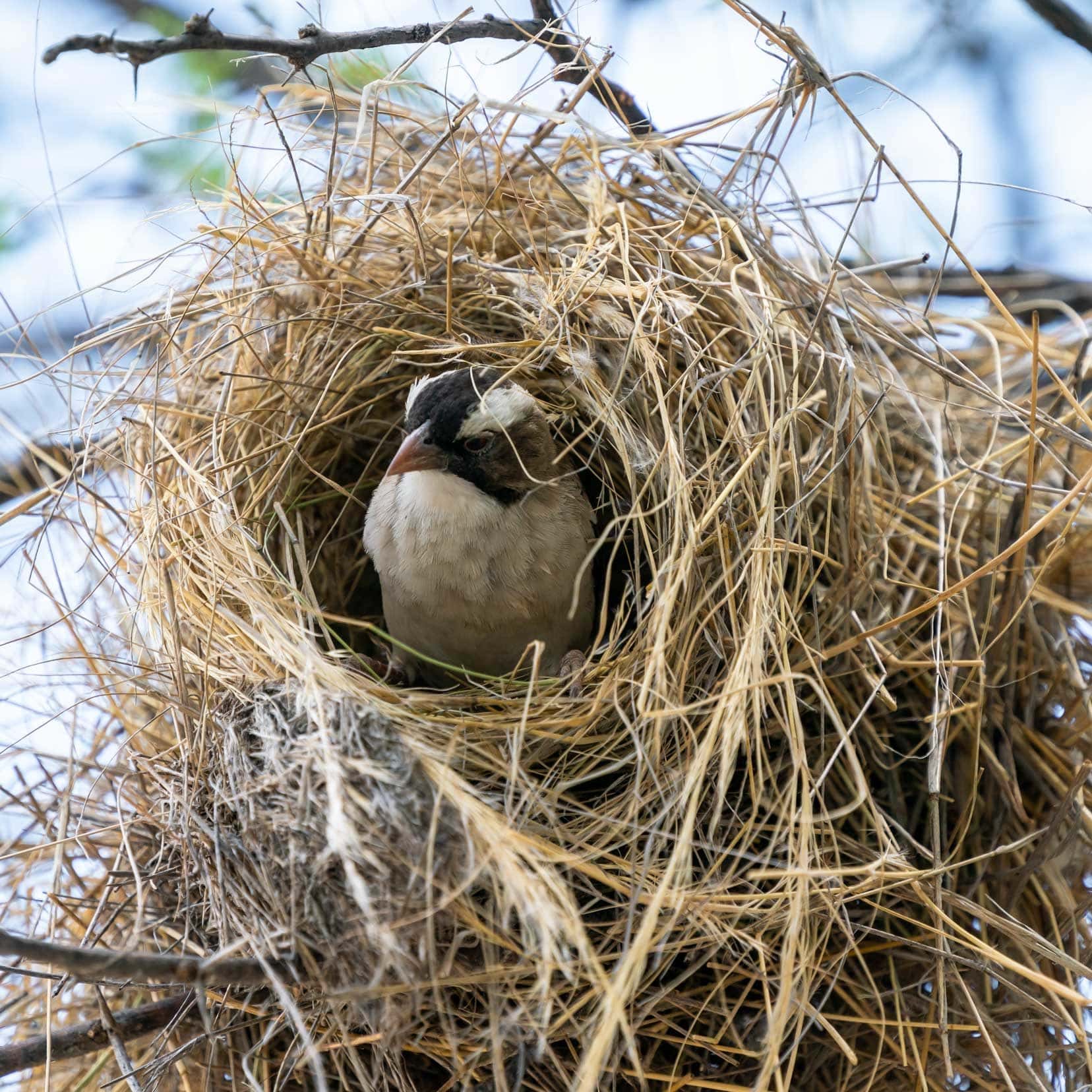
As with Piper Pan, Sunday Pan has a few loops and a waterhole. The distance around them is smaller though and we didn’t have as much luck spotting wildlife at the waterhole as we did at Piper.
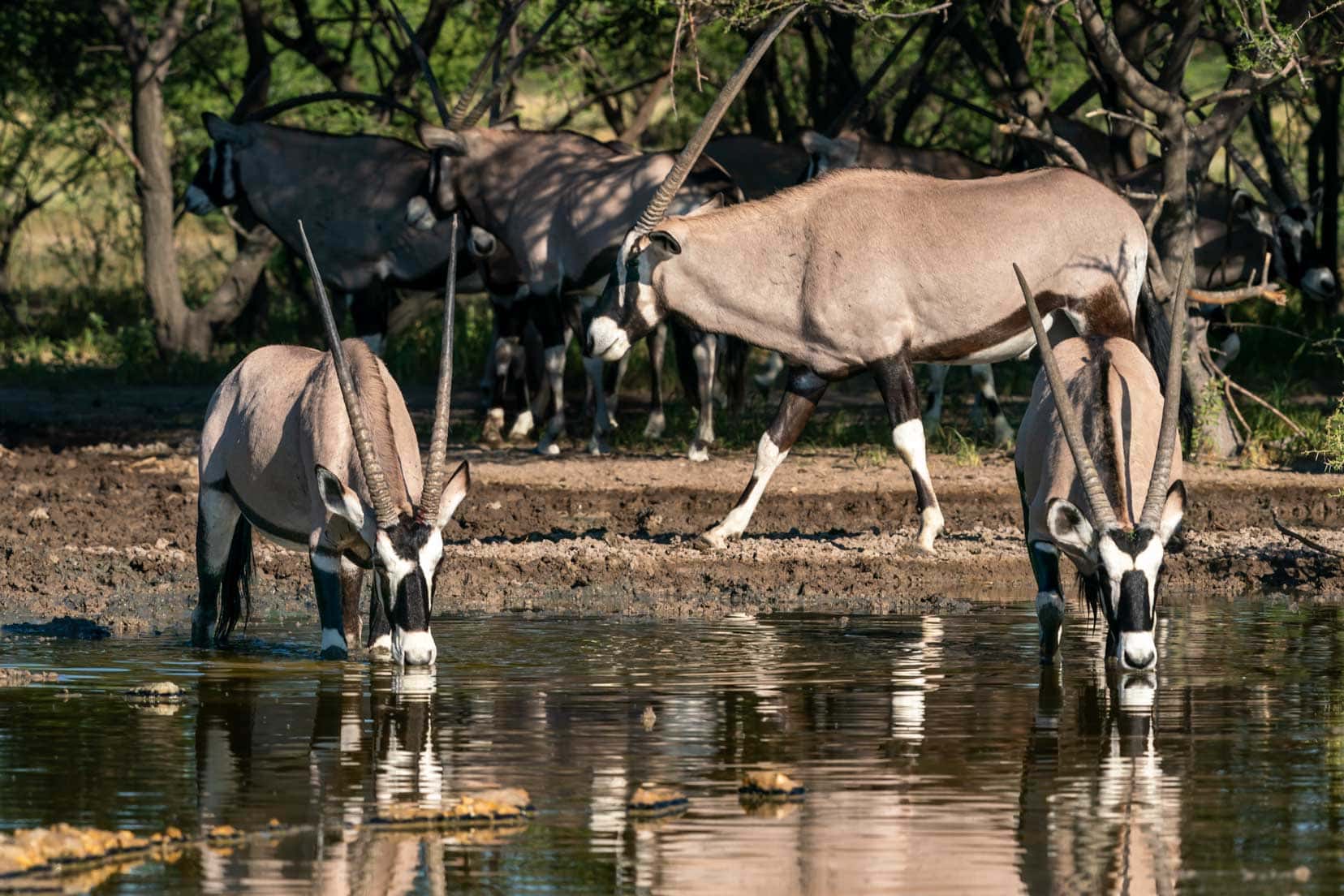
We popped up to Leopard Pan just a few kilometres north and drove the Leopard Pan Loop a couple of times too. We mainly saw Gemsbok, wildebeest, and Springbok.
On one occasion though, I spotted a bush that looked like an elephant. As I was telling Lars about this interesting shape… it moved.
To my astonishment, it was an actual elephant.
At this point, we hadn’t read anywhere that there were elephants in the reserve, so it was completely unexpected.
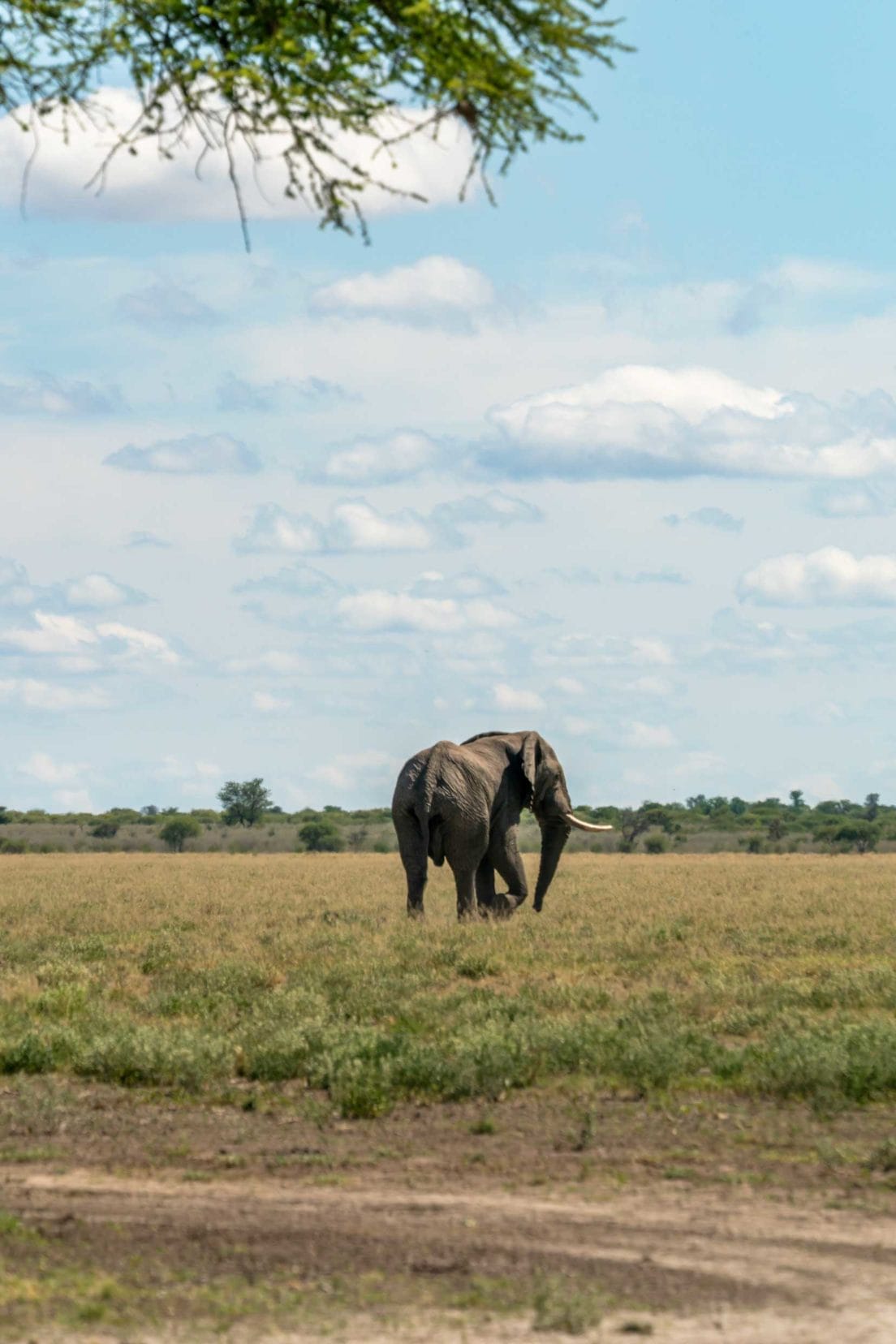
What Wildlife Will you see in the Central Kalahari?
This list is based on our own experience and reading about the area. We’ve ordered them from Likely, to if you’re lucky, to give you a realistic perspective of what you might encounter on a trip to the Central Kalahari Reserve.
As with all wildlife sightings, there is never a guarantee, but if you are in the CKGR for a few days and drive the loops and spend some time at the waterholes, your chances of spotting the Kalahari wildlife will be higher.
We’ve marked the animals that we saw with a tick.
Likely to see
- Springbok ✅
- Gemsbok ✅
- Wildebeest ✅
- Steenbok ✅
- Black-backed jackals ✅
- Bat-eared foxes ✅
- Kori Bustard ✅
- Secretary bird ✅
- Northern black korhaan ✅
- Ostrich ✅
- Cape ground squirrels ✅
Less Likely
- Giraffe ✅
- Red hartebeest
- Eland
- Elephant ✅
- Mongoose ✅
- Zebra
If You’re Really Lucky
- Cheetah
- Leopard
- Lion ✅
- Black-maned lion
- Wild dogs
- Honey badger
- Brown hyena
- Lapped-faced Vulture
- White-backed Vulture
And last of all … If you’re unlucky (you only want to see these from a distance – or, if you’re like me, you might rather not see them at all)
- Black mamba
- Cape cobra
- Puff adder
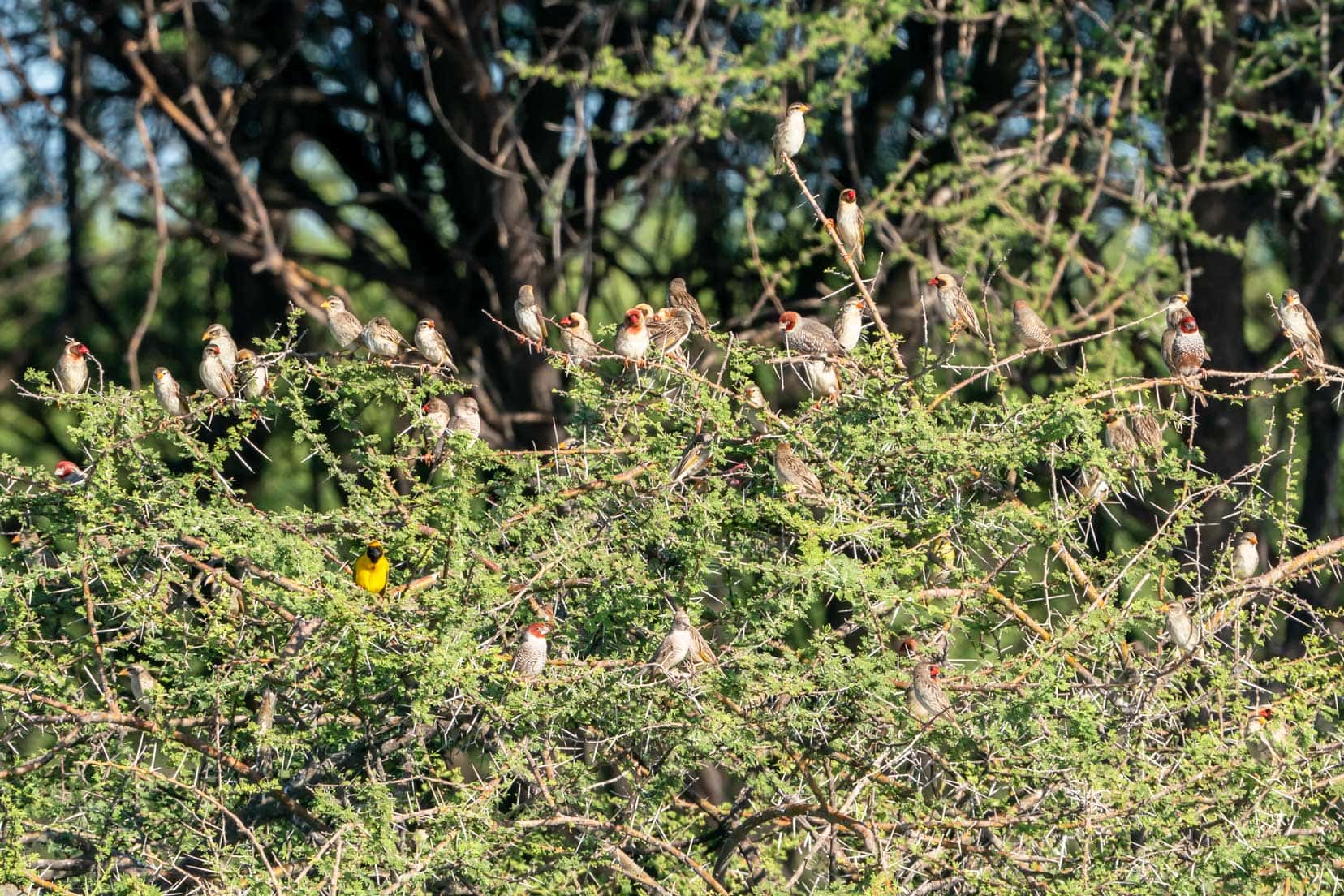
The Practicalities of Visiting the Central Kalahari Game Reserve
Here we’ve listed a few things that will help you while planning your Kalahari trip.
Water in the CKGR
The biggest concern when visiting the CKGR is that you have enough water. The campsites are remote, there is no cell phone signal, and you may not see another vehicle passing you for days.
Having enough water, not only for your planned time in the Kalahari Reserve but extra in case of emergency is therefore vital.
Tracks for Africa, in their Botswana Self-Drive Guide, recommend 6 litres of water per person and then on top, another 2 litres per person for an extra 5 days in case of emergency.
⭐️ By the way, we highly recommend grabbing a copy of this book if you are planning to self-drive in Botswana. Check it out on their online store or on Amazon here
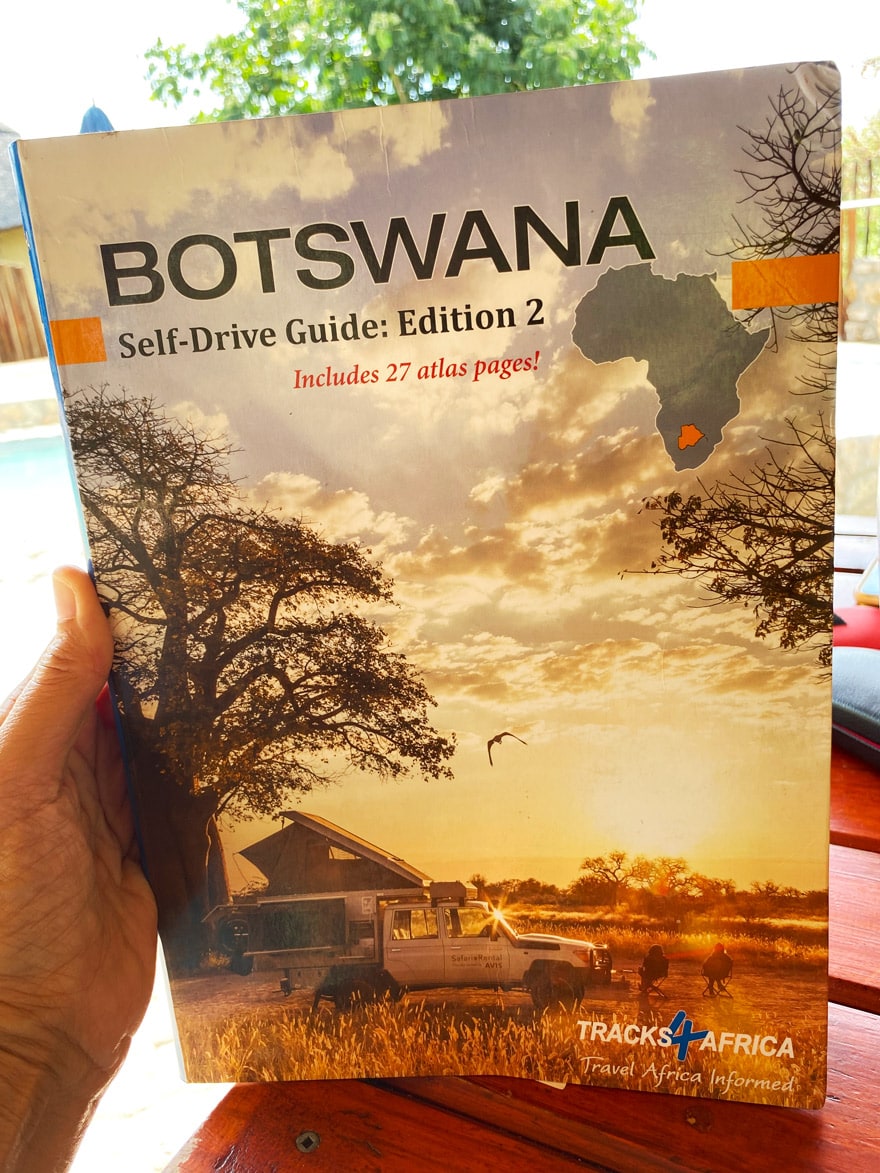
Our Hilux 4×4 Camper has a 60-litre water tank and we also had another 25 litres on top of that.
We thought 85 litres would be enough for our planned 5 nights, with enough left over in case something happened, like a breakdown (and by that I mean a breakdown of the vehicle … and hopefully not us), or we were bogged and couldn’t dig ourselves out, or heavy rains that forced us to wait it out somewhere.
After three nights we had already used our 60 litres tank of water. On day four, although we had enough water to last another night, we knew that we would be in strife if anything hampered our leaving of the reserve.
We made the decision to leave a day early.
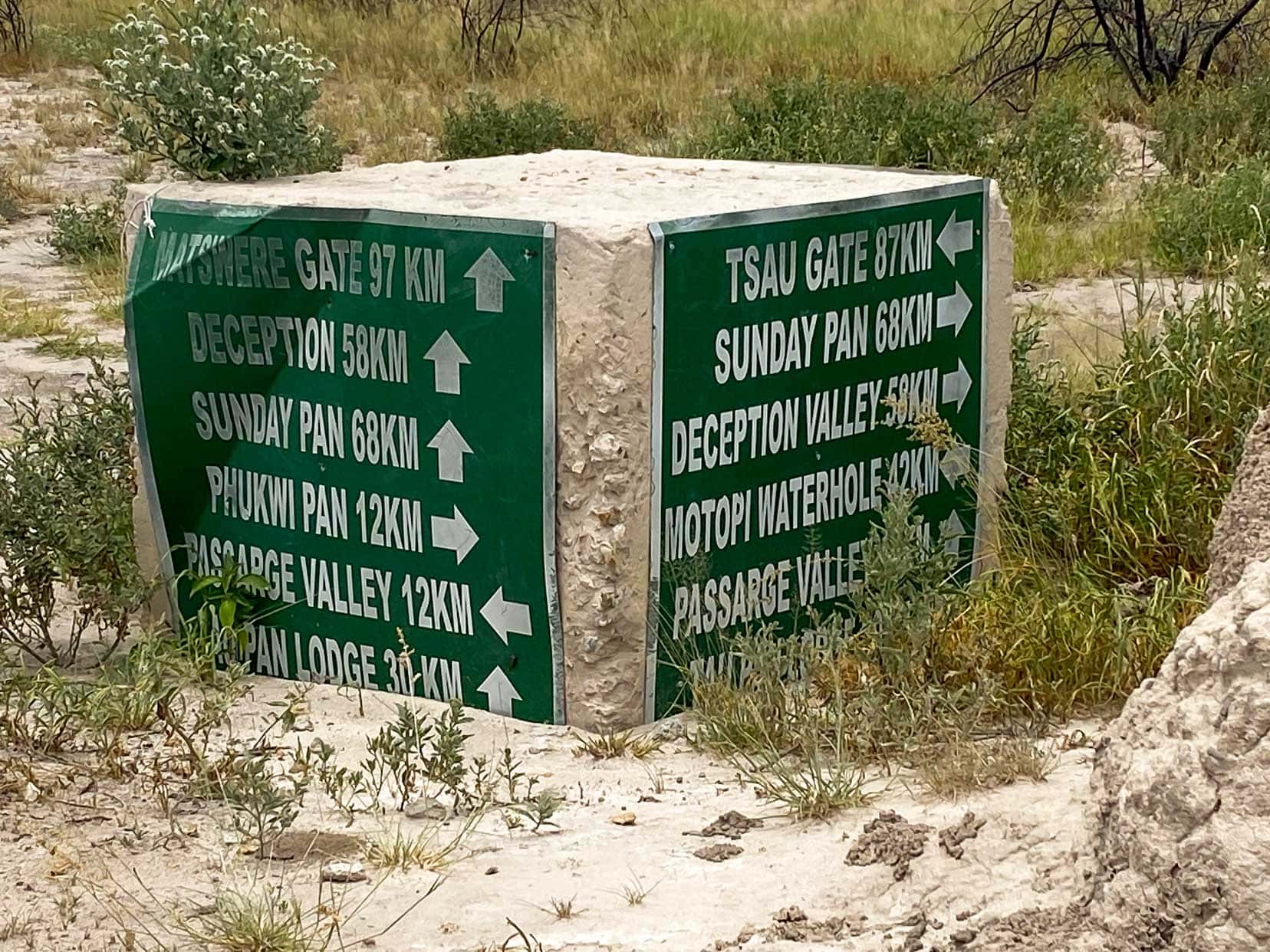
The Need to be Self-Sufficient in the Central Kalahari Reserve
As you would expect, without water or any facilities you will need to be completely self-sufficient in the Central Kalahari.
Along with enough water, you will need to make sure you have enough food and fuel.
(We stocked up on food and fuel in Letlhuane, at a Pick N Pay in Teemane Mall — see map)
In summary, when visiting the Central Kalahari make sure you have:
- Enough Water, food and fuel for your trip
- First Aid Kit
- Vehicle recovery equipment
- Satellite phone or Garmin Satellite communicator (That’s what we have)
READ MORE: For more information on planning a road trip and vehicle preparation, read our article about Planning a Road Trip and jump to the 4WD section.
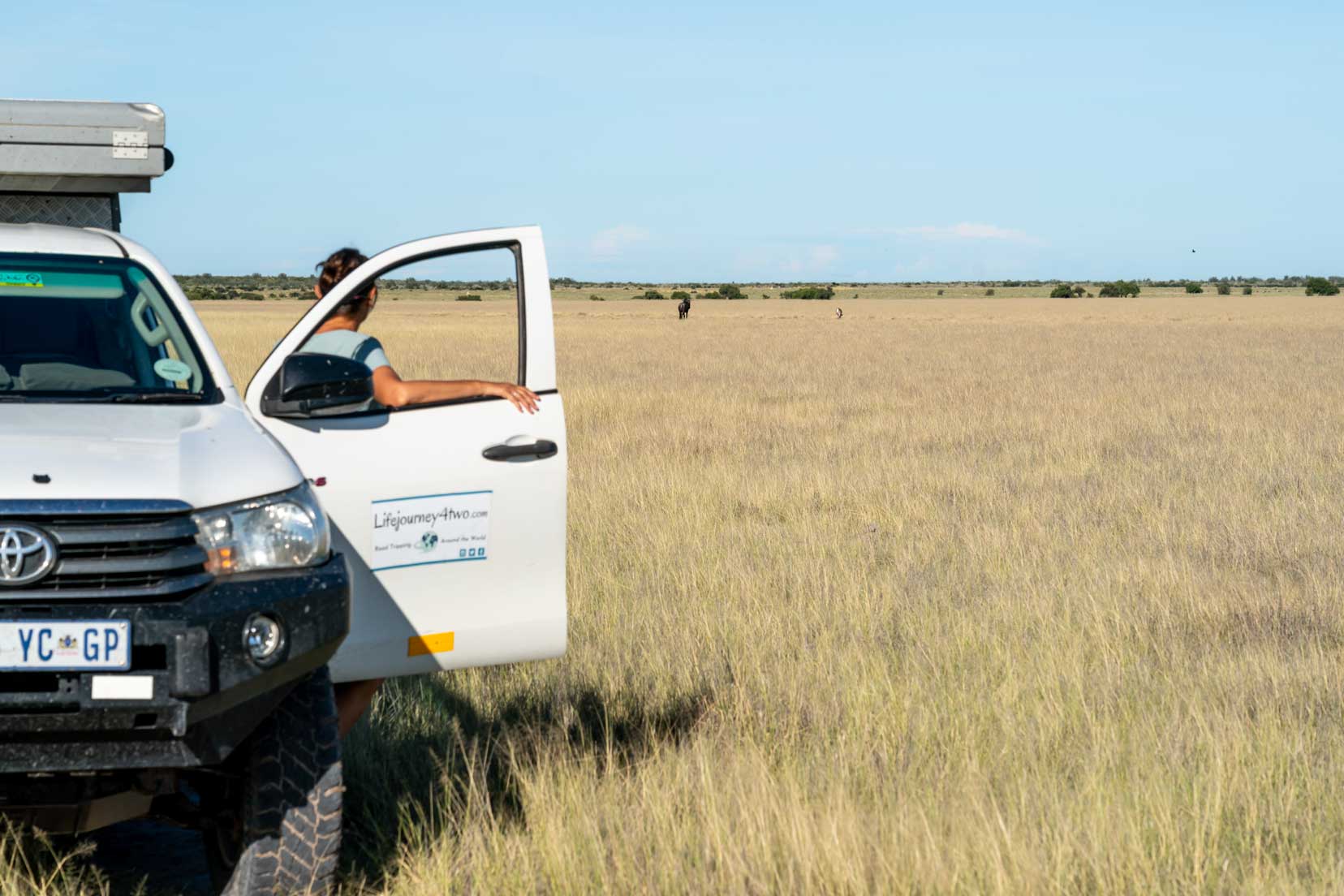
Tracks4Africa Maps
The best maps for travelling in Southern Africa are those by Tracks4Africa. They include all the sand tracks and we have found them to be the most reliable and easy to use.
They also give the average times between points which is really useful, because sometimes what may be a short distance can take a long time due to the driving conditions. A classic example is the Central Kalahari.
We have also tried many map apps and by far the best is the Tracks 4 Africa app.
We use paper maps for planning our route and then the Tracks4Africa app en route. The GPS marker tracks our position, so as chief navigator, this makes my job so much easier!
👉 Take a look at the range of maps and GPS apps they offer here
Driving Conditions in the Central Kalahari Game Reserve
When you leave the main road on your way to the gate, make sure to reduce tyre pressure. There are areas of deep sand and in the rains, there can be boggy mud and clay areas.
All of the information we read before visiting the CKGR, mentioned that this area was one of the most challenging in Botswana and that it was not recommended for the inexperienced 4×4 driver and those not used to camping.
We had read many warnings about driving in the Central Kalahari in the summer. The rains can bring treacherous conditions with deep bogs and flooded stretches of track.
When we were there, however, from the 19th to the 23rd of January, we only had a few drops of rain and all the tracks, although badly rutted in places were drivable.
Make sure you have all the necessary vehicle recovery equipment such as snatch straps, jacks, and the like.
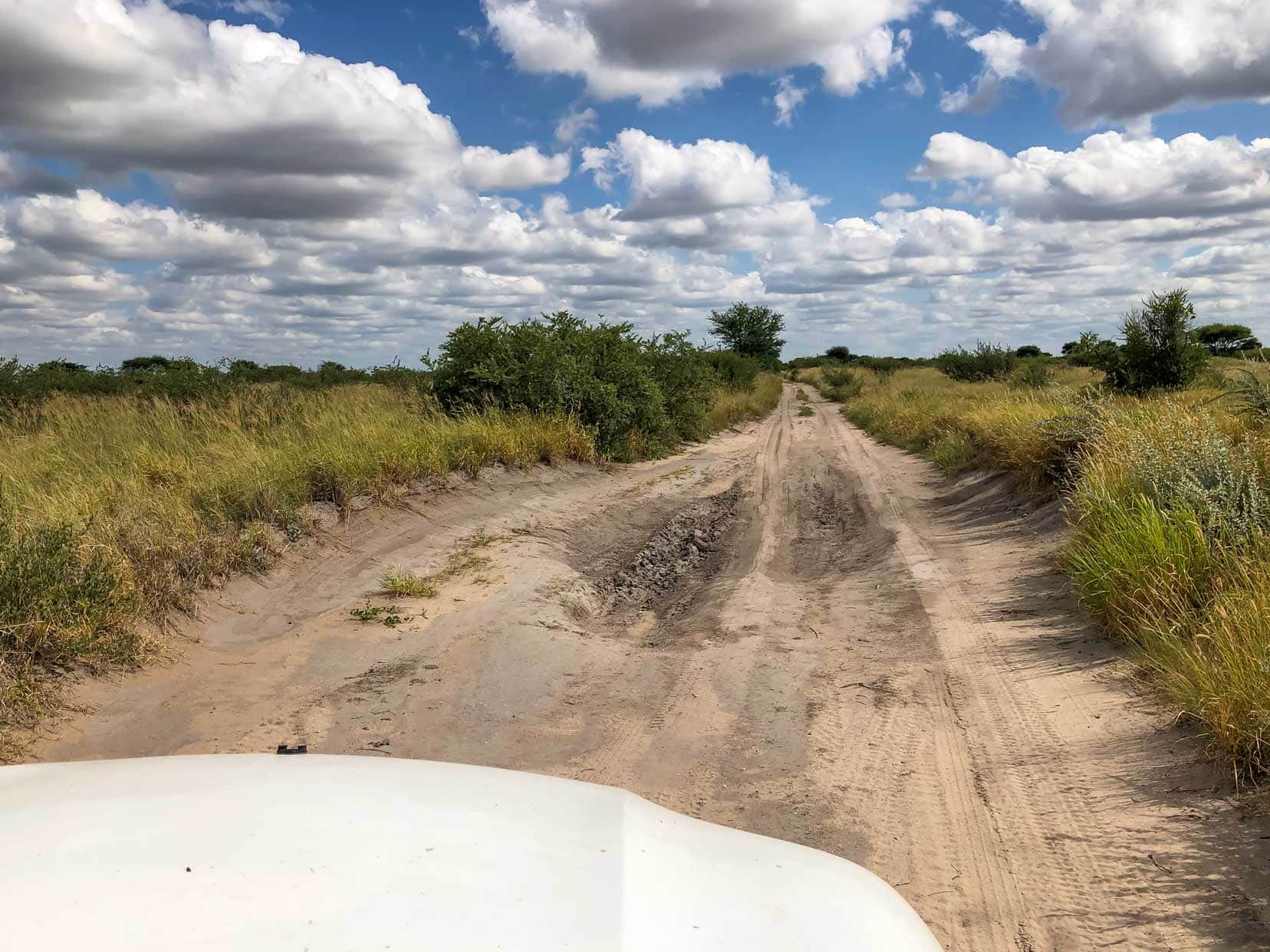
Hiring a 4×4 Rental for Exploring the Central Kalahari & Botswana
Thinking of hiring a camper in Botswana?
We recommend using Motorhome Republic to find you the best deal – they search all the local reputable African rental companies, for example, Avis Safari, Britz and Caprivi Car Hire.
They do all the hard work for you and are available 24/7 to help you.
We used them when renting for 12 months in Europe and not only was the customer service excellent but they were able to find us better offers than when we approached the companies ourselves.
Since Covid, there has been a worldwide shortage of campers and limited availability, so do book early to make sure you can rent the vehicle that suits you best.
The Best Time to Visit the Central Kalahari Game Reserve
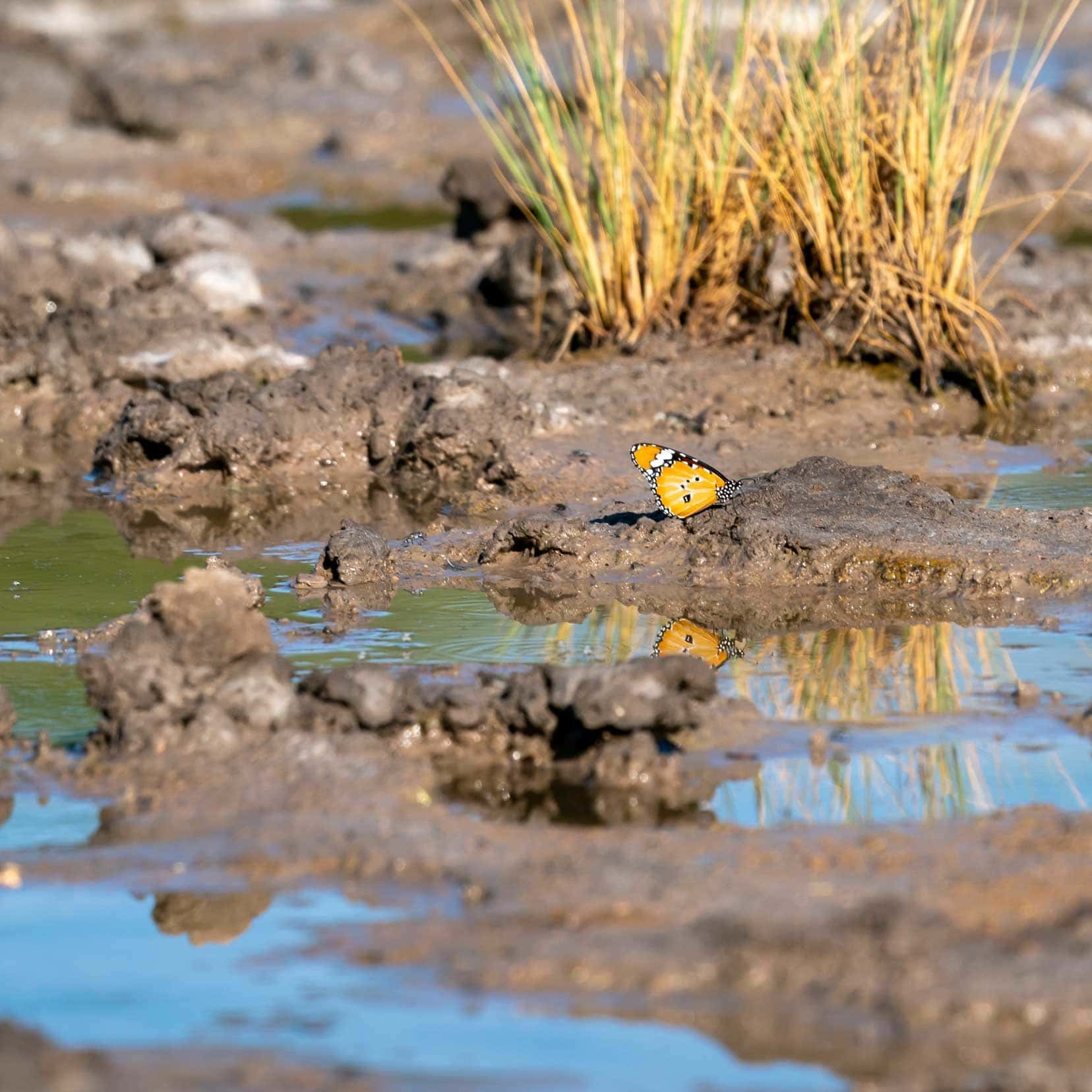
November to March (wet season)
This is the rainy season, and the Central Kalahari pans change from what looks like grey slabs of concrete to lush grasslands. With the rains come the wildlife and the plains teem with herds of game.
The temperatures are high though, reaching the high 30s and the sandy tracks can become extremely boggy and difficult to travel through.
In November and December, many of the grazers give birth, again attracting predators. The summer months also see many migrant birds visiting the Central Kalahari.
Although travelling conditions are at their worst, wildlife viewing is at its best.
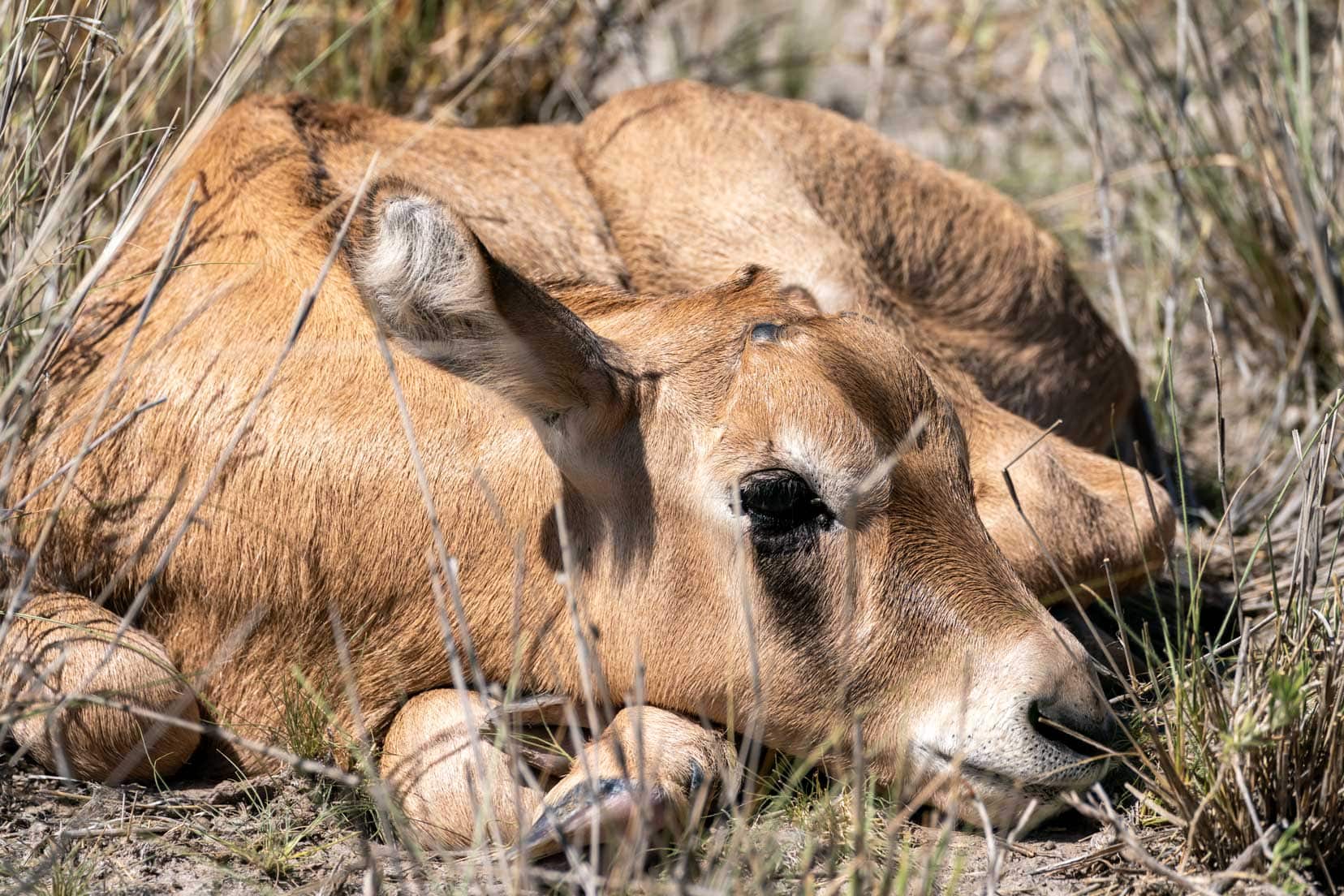
April – October (dry season)
This is the dry season, and the roads are less likely to become difficult. There is less vegetation so sightings of predators may be easier.
April and May have very little rain and the temperatures are cooler, so this is still a good time to visit. July to October is the peak season, so the reserve may be busier than usual and camping costs may increase.
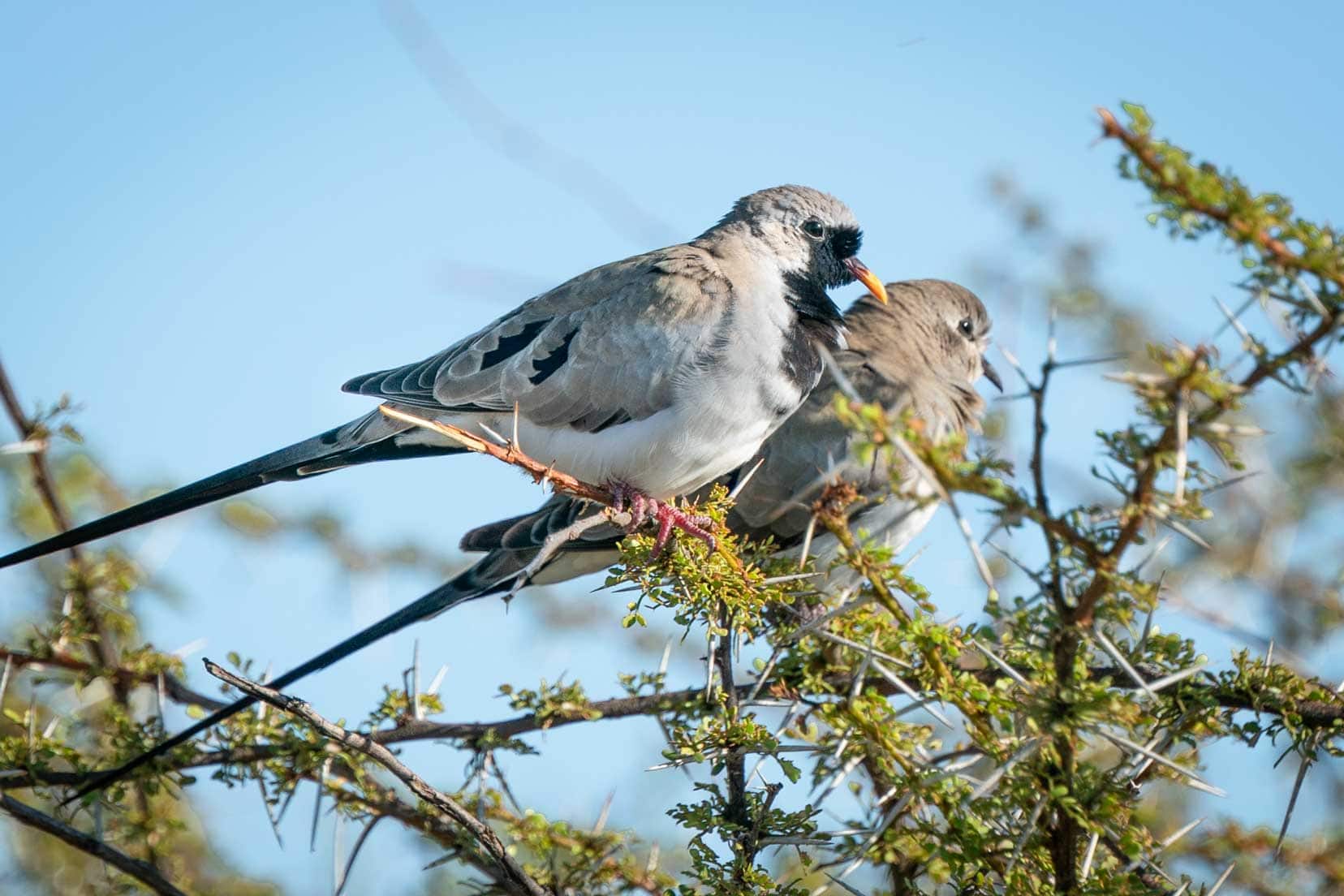
Where to stay near the CKGR
We stayed at a camping site an hour’s drive from the turn-off to CKGR towards Matswere Gate, at Makumutu Lodge Camping.
In fact, we stayed there both before going into the game reserve and also when we came out. There is a lovely swimming pool, and green gardens with shaded areas (most have electricity and charging points, so we were able to work from our laptops).
There are three camping spots each with its own shaded hut area including a shower, toilet and sink area. The sites have electricity, water and a fire pit.
There is also free wifi, but you’ll likely have to sit in the garden/ pool area or near the restaurant to get a signal.
Contact Details: [email protected] (The 2024 rates per person per night are TBC)
Central Kalahari Game Reserve Camping Tour
If you love the sound of camping in the Central Kalahari, but you don’t have the necessary vehicle or the 4×4 experience to embark on a trip like this, then why not book this camping tour?
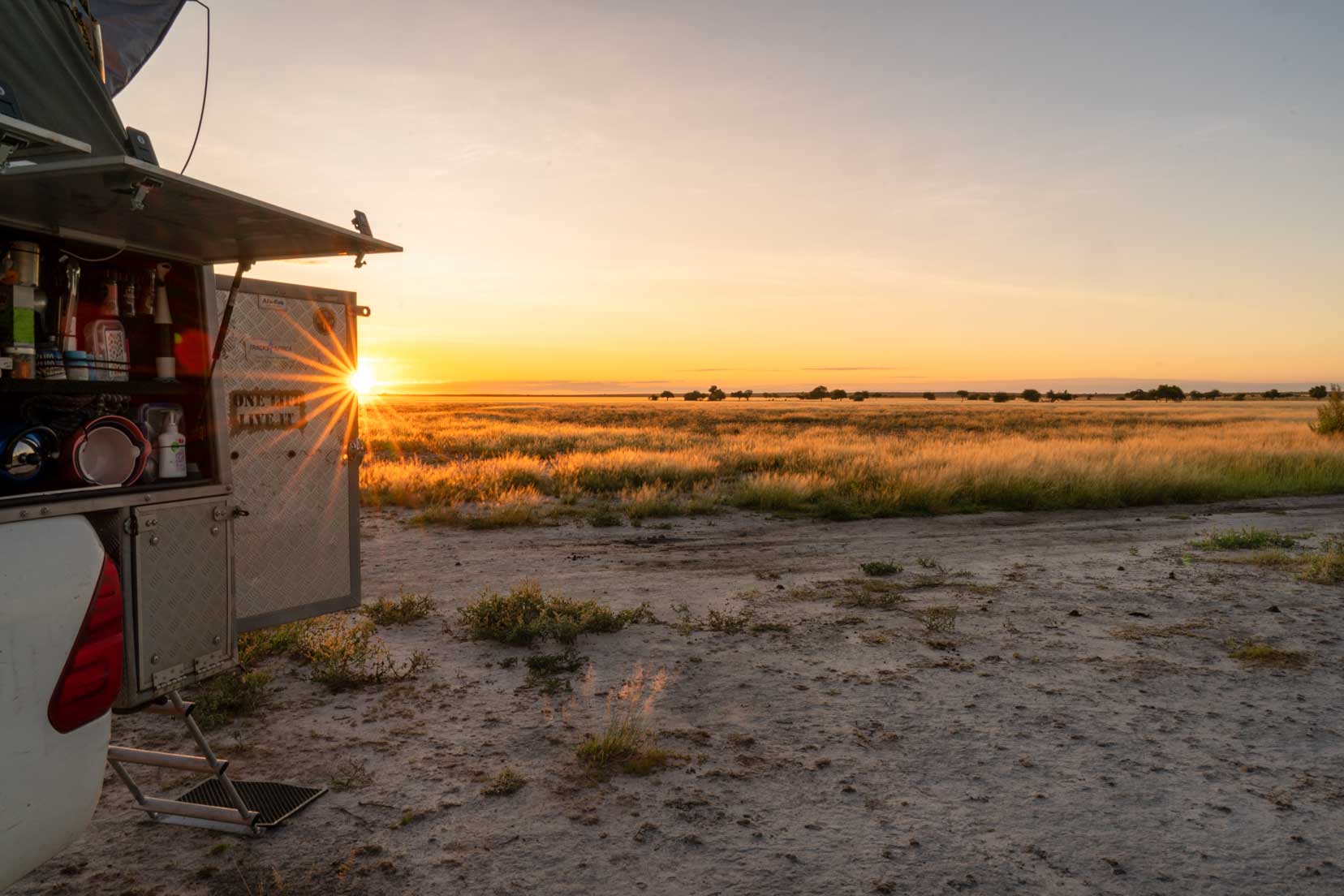
Central Kalahari All-Inclusive Tour
You can take a three-day, all-inclusive tour of the Central Kalahari Reserve and experience this untouched wilderness with everything laid on for you.
You’ll visit Deception Valley, Sunday Pan Waterhole, Passage Valley, and Leopard Pan and cap off each day with sunset drives, campfire stories and dinner cooked by the tour chef.
🐾 Read all about this tour here or BOOK NOW to reserve your place
⭐️ We recommend Get Your Guide because they are selling tours that are mainly run by local companies, and most tours and activities have Free cancellation up to 24 hours in advance for a full refund.
With their Reserve Now & pay later option, you can keep your travel plans flexible — book your spot and pay nothing today.
There are also a couple of luxury lodges in the reserve, the Tau Pan Lodge and the Kalahari Plains Camp which you may be interested in. Click on their links to find out more.
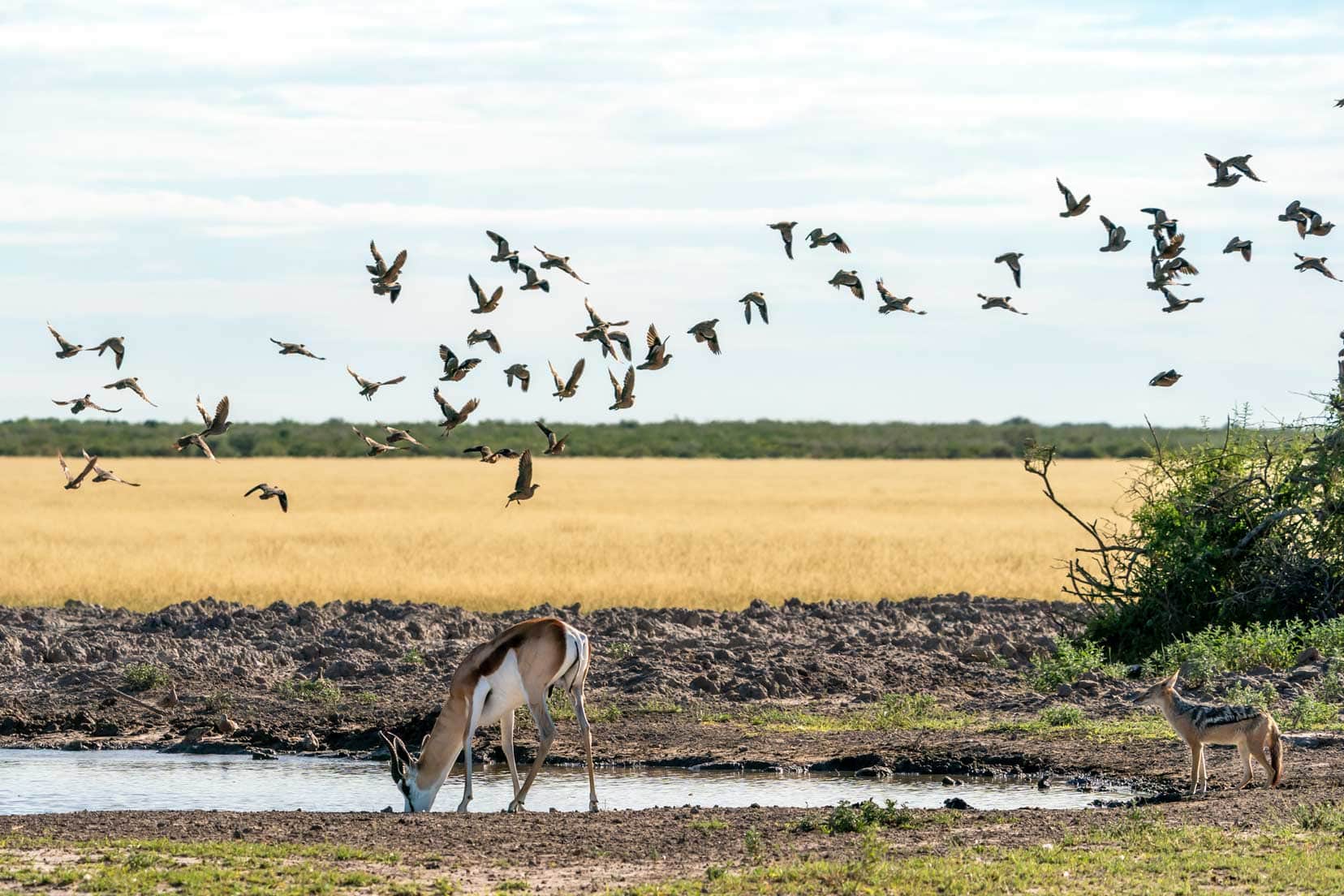
Camping in the Central Kalahari Game Reserve … That’s a Wrap
To summarise, a camping trip to the Central Kalahari Game Reserve is best for wildlife in the rainy season but you will need to be well prepared for any possible driving difficulties. We were lucky to have no issues in mid-January, but it was very hot.
The payoff for us was seeing all the young animals. But whatever time you choose to explore the Central Kalahari, this article will help you choose the best campsites and to be fully prepared for your trip.
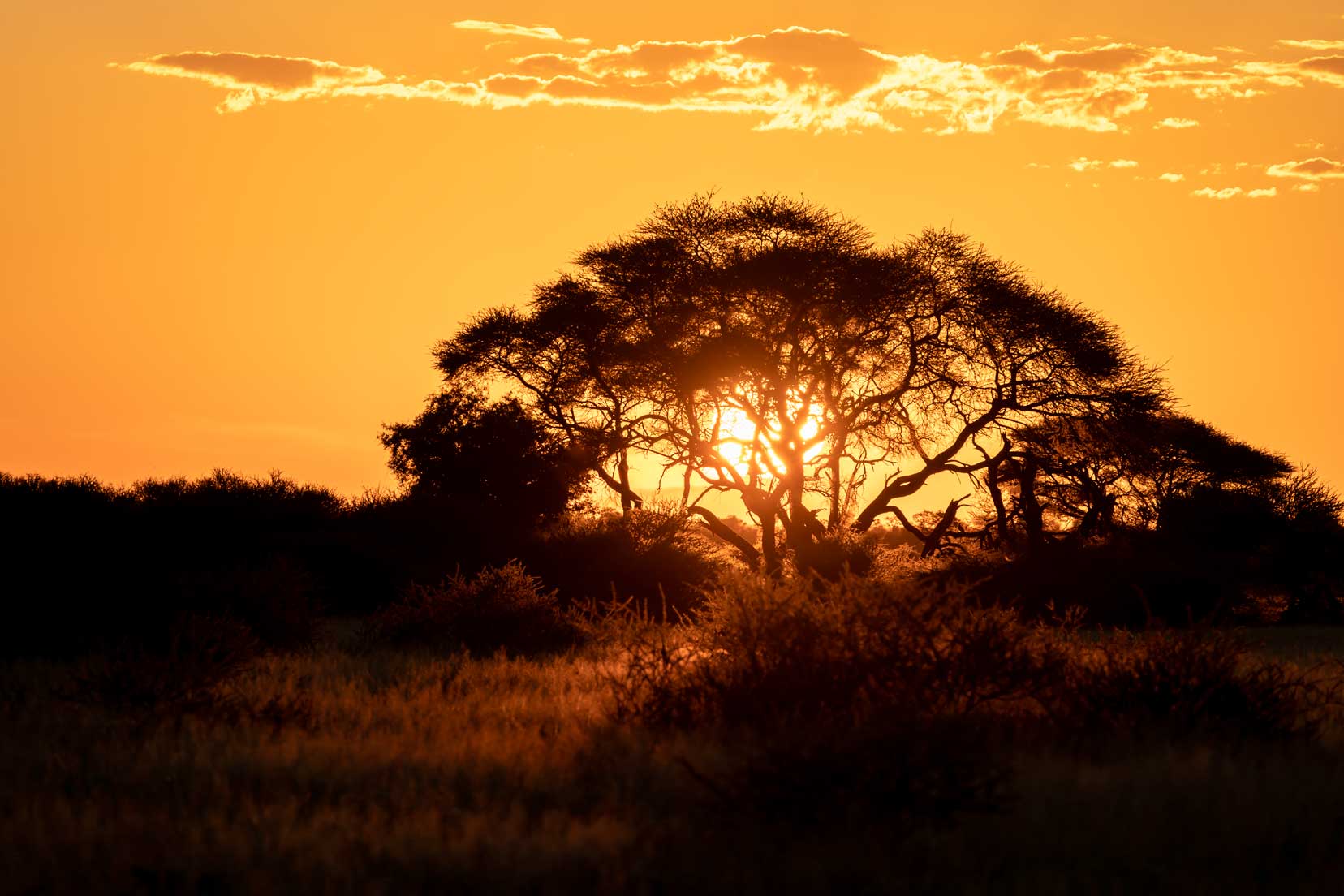
Related Articles:
- Ultimate Guide to Camping in the Okavango Delta, Botswana
- Kgalagadi Camping, Botswana
- Nxai Pan National Park Ultimate Visitors Guide, Botswana
- Guide to Khama Rhino Sanctuary Camp, Botswana
- Guide to Safari Essentials
Planning Your Travels?
These are the travel resources we recommend and use when planning our trips.
- 🚘 Car Hire: We use DiscoverCars.com
- Motorhome/Campervan Rental: We highly recommend the Motorhome Republic
- 🪪 Order your International Driver’s Licence online here
- 🛏 Book Accommodation: We use Booking.com to find accommodation that suits our budget
- 🐶 Pet Sitting/Pet Sitters: Check Out TrustedHousesitters here (Use our Discount code: LIFEJOURNEY25 for 25% off. )
- Activities and Experiences: Get Your Guide and Viator
- Travel Insurance: Safetywing or World Nomads
- 🥾 Travel Gear and Accessories: Check out our top picks here — Lifejourney4two page on Amazon
For a more thorough list, visit our Travel Resources page here.

